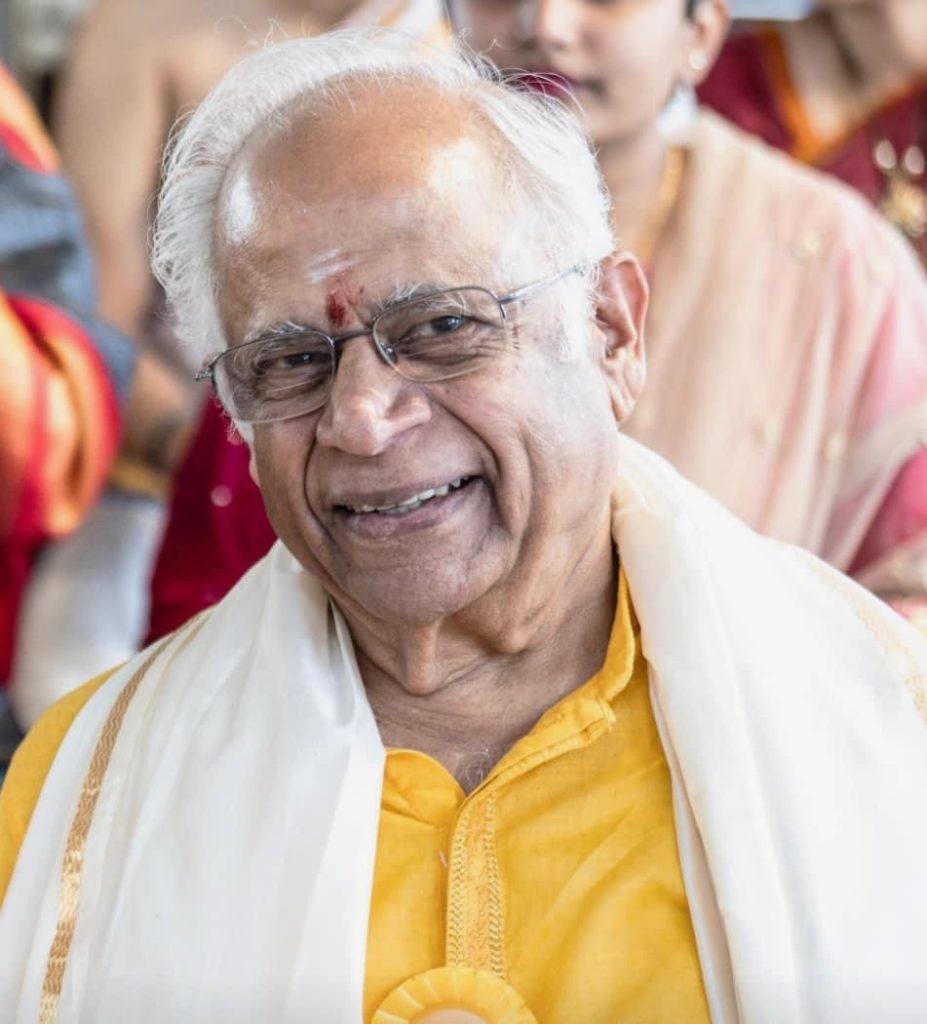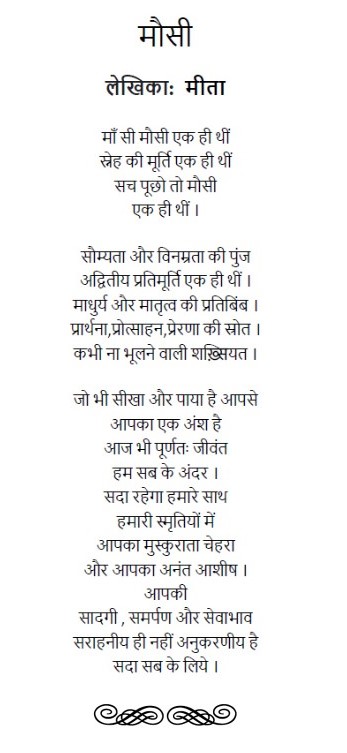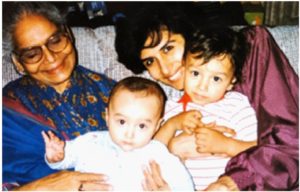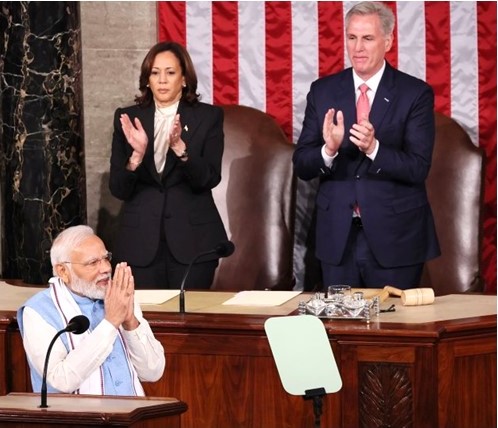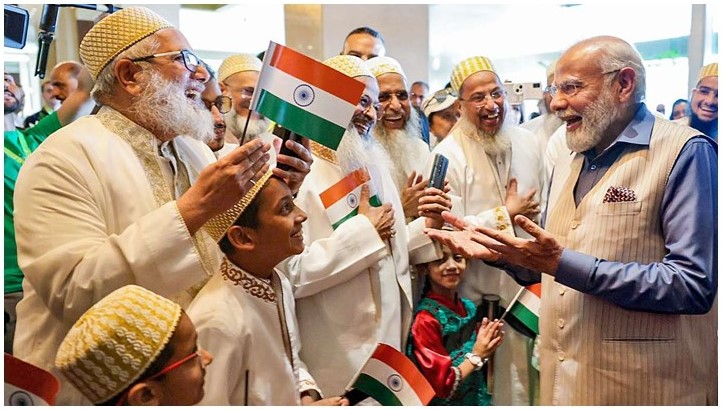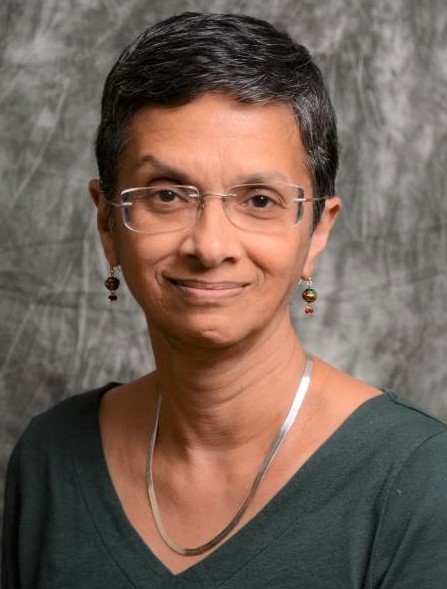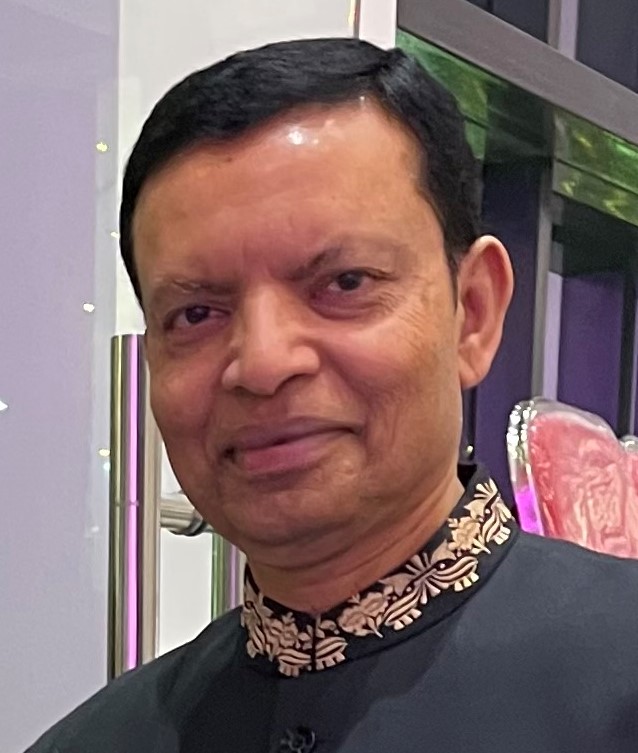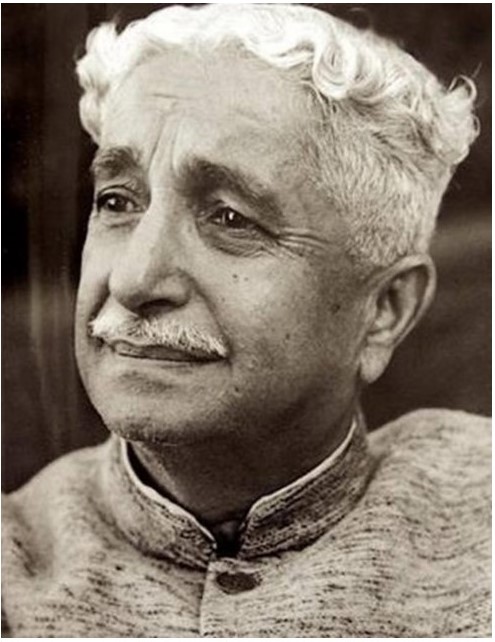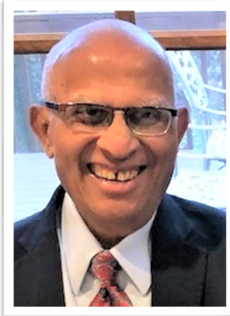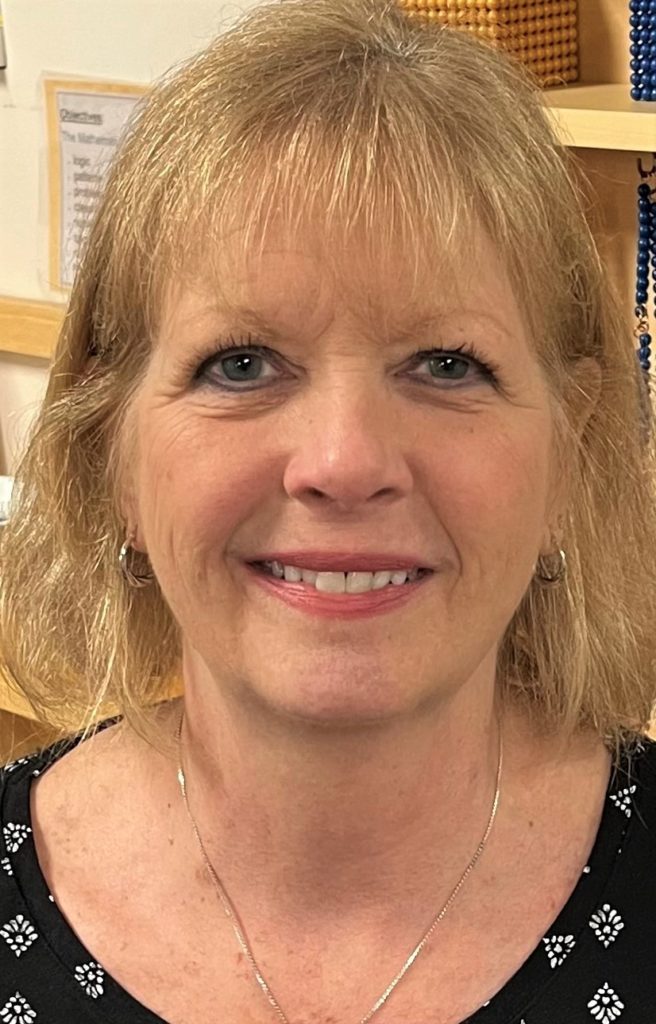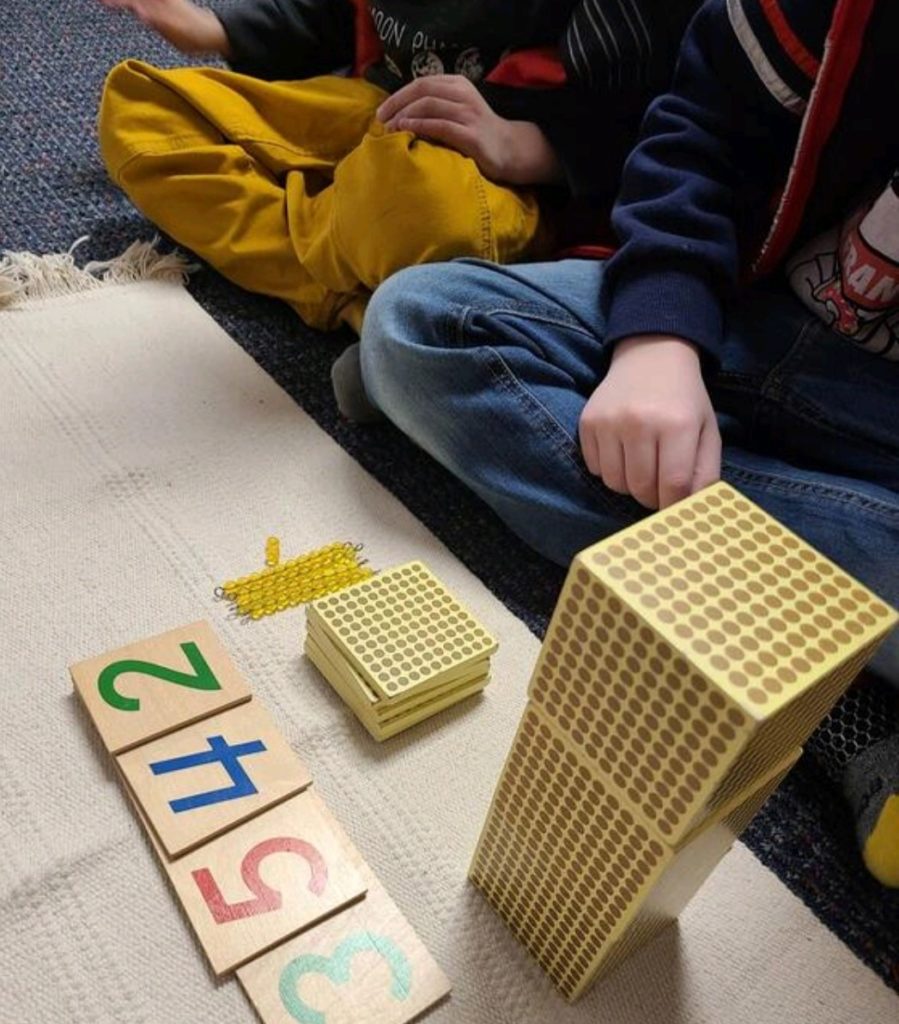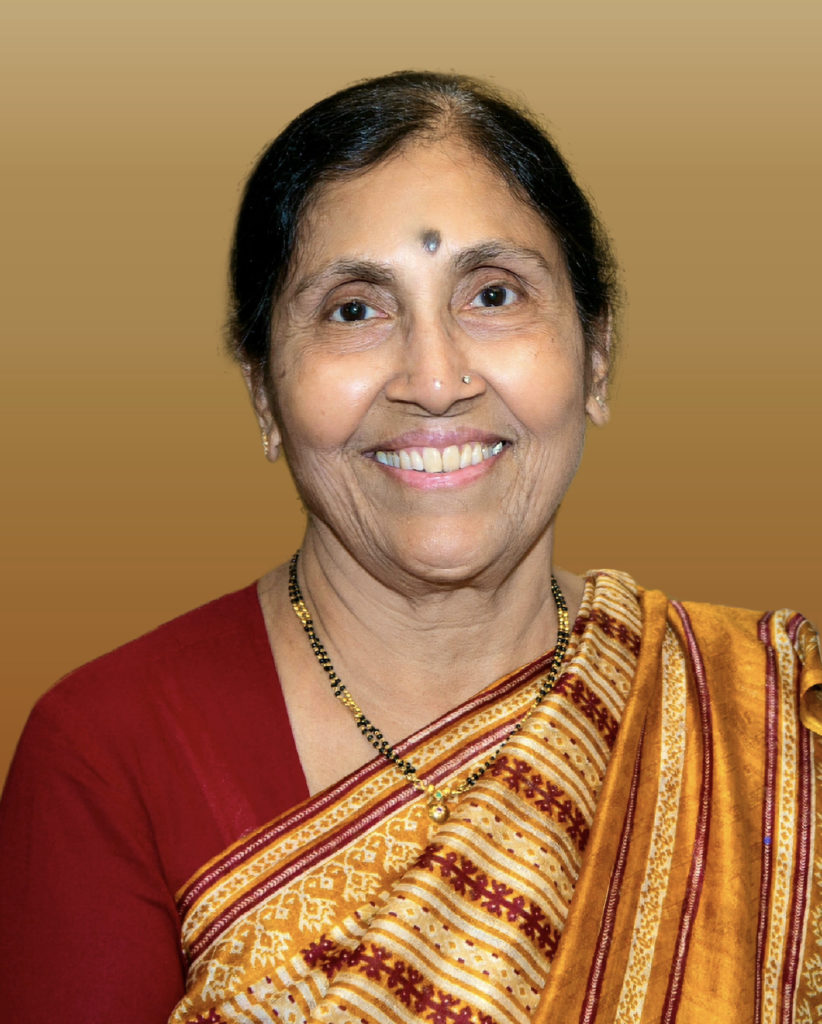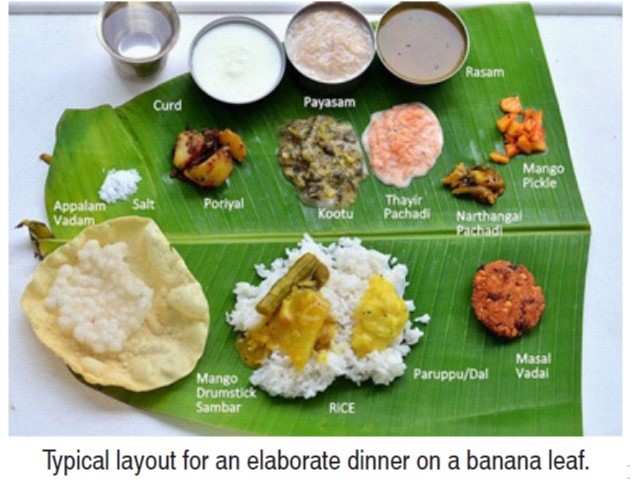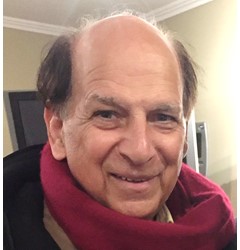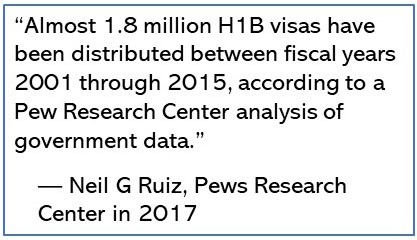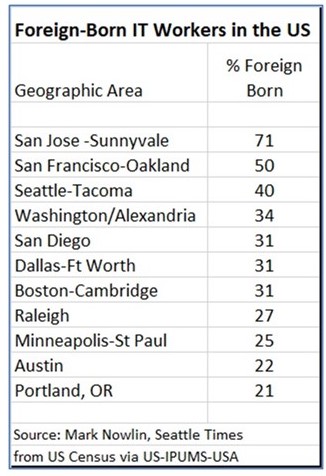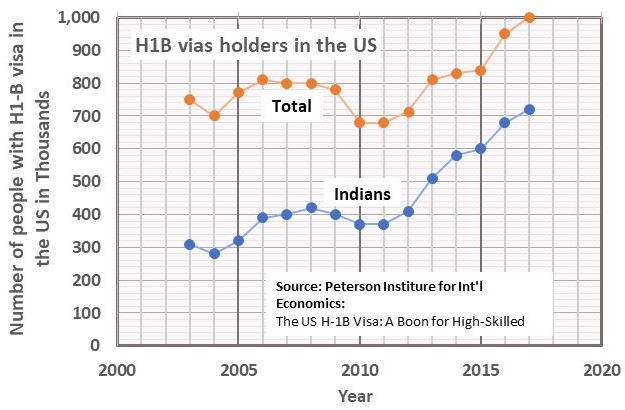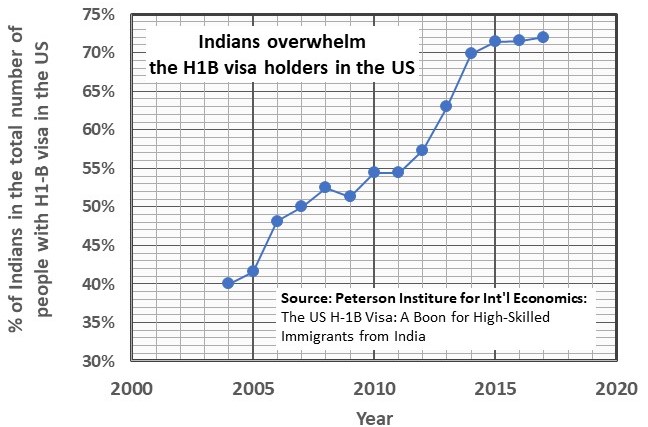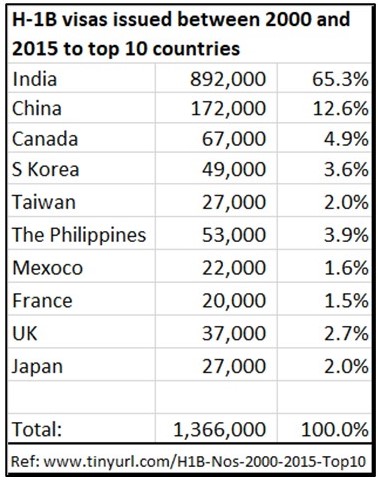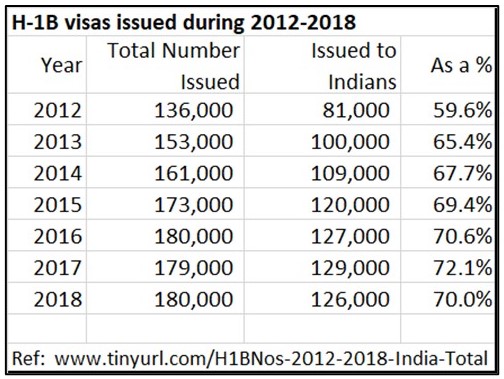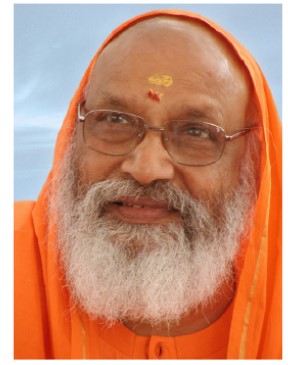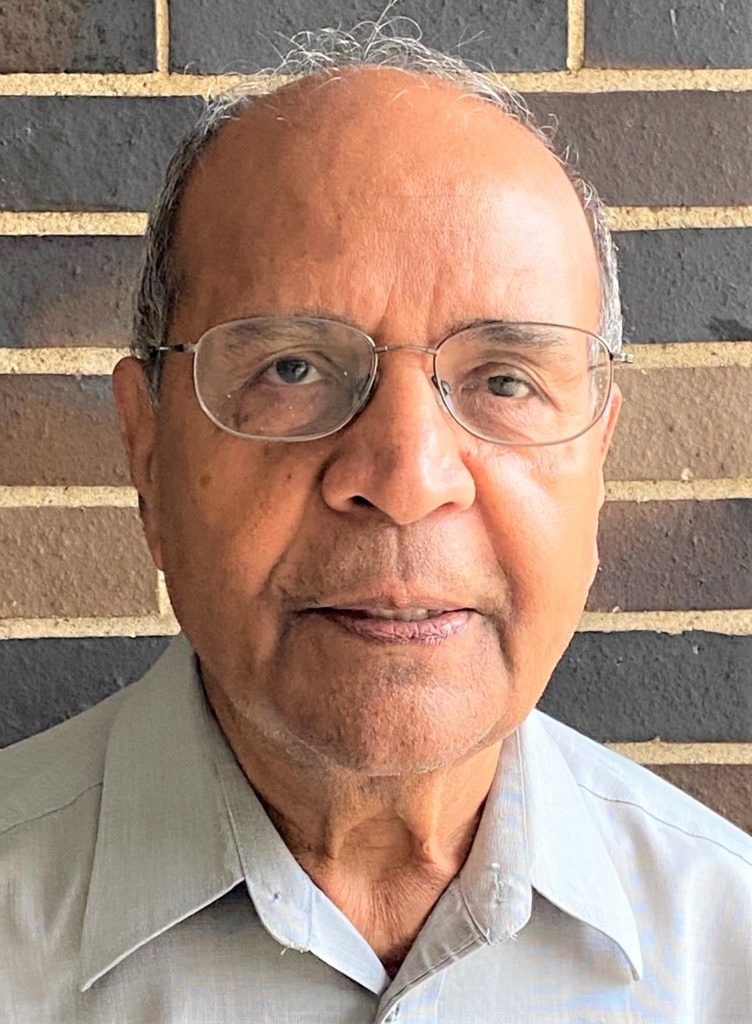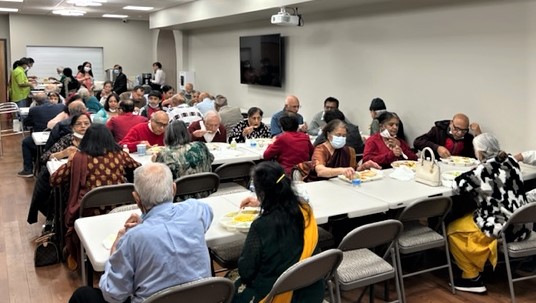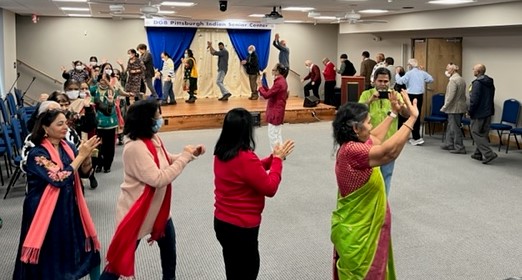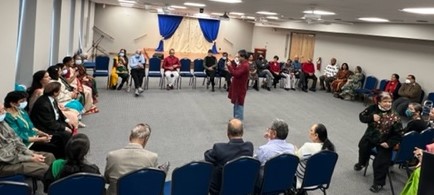The Pittsburgh Patrika’s Twenty Years
Posted by admin in January 2016 on December 28, 2015
By Premlata Venkataraman

With the October 2015 issue, The Pittsburgh Patrika crossed a milestone. It was 20 years ago in October 1995 that we mailed our very first issue of the magazine. It was a nebulous idea coming true for my husband Kollengode S. Venkataraman, who is a news junkie by habit, an aficionado of Tamil classics, a dabbler in eclectic things here and there, a man with opinions on many facets of life, and willing to put them on paper. Incidentally, maybe accidentally, he is an engineer by profession.
When he bounced around the idea of a magazine for the Indian diaspora, most of the advice he got was that there would be only minimal interest. Since most of the activities then, and still now, occur at religious centers with their own newsletters, there really was nothing else to cover. With our two daughters still in school and the huge cost of their college education staring at us, we set out to give the venture a try, mentally ready for the magazine’s neonatal death.
In the first issue, Venkat wrote, “This newsletter is a forum for airing and sharing your views, ideas, even frustrations, on any matter of topical and not-so-topical interest. [We, the Indians here] have quite a diversified background, and yet are so very alike. When we look through our patina of sophistication, we often see that our pleasures and pains, anxieties, concerns, hopes, expectations, even griefs, are similar. The Patrika’s intention is to entertain and inform people who share a certain value system, and are curious about what is going on in our midst… … If you feel strongly on any matter…, now you have a forum to air it.â€
The first issue (with no advertisements,) only talked about the intent of what the future issues would cover. Vividly we remember now: we did not want to staple the magazine on its spine since that would involve an additional $8 for the 400 copies!
Early on, we decided the focus would be on our Indian and American experiences relating to our lives in Western PA, something neither fully Indian, nor presumptuously American, to echo the evolving identities of Indian immigrants who now call Western PA their home. The name Pittsburgh Patrika truly reflected our pan-Indian and yet American identity in Western Pennsylvania, in which Pittsburgh has a dominant presence.
On these points, your magazine, all through these twenty years, has stayed true to what it set out to do. We do cover stories/trends/political upheavals that occur in India and here as well, but always keeping the focus on how it relates to our lives here.
While covering the events put together by the Desi Diaspora here, we are astounded at the vibrancy of the talented people pursuing different facets of our culture. Whether it is Holi, Garba, Pongal, Diwali, India Day, or Gandhi Jayanti, we are ready to gather and party! Covering these events and getting to know the organizers has been a lot of fun.
When we started, our understanding was that we attended our temples, went to our weekend parties, liked cultural programs, and were always preoccupied with our children’s discipline and education. But we were astonished by the treasure trove of hidden talents in the community and were enthusiastic to highlight the best of India and integrate it into the American mainstream: music teachers and talented dance teachers and their students, artists, painters, henna artistes, social activists, fundraisers for local causes, volunteers in mainstream organizations. Highlighting these activities has been the most satisfying part of running the magazine. We must here acknowledge the conducive atmosphere of multiculturalism encouraged in the US.
In recent years there has been a trend for fundraising for many local causes by Indian-Americans here. Staging music and dance shows or even organizing 5-K walkathons to help those less fortunate in our neighborhood is a very healthy, welcome trend. Giving greater visibility to these events in the magazine, we hope, ensures more participation.
Personally it has been an educational and humbling experience for us in this small undertaking. While researching stories and interacting with people coming from different parts of India, we realize how much more we all have in common. With more and more of our youngsters intermarrying among ourselves and with mainstream Americans, we will come together as a single community uniting under the banner of our Indian-American identity, even as we integrate rapidly into the American mainstream.
Another point is that articles in The Patrika are authored by people living right here among us. This makes the magazine interesting reading. We thank these writers for their interest. We acaknowledge our reader’s kind words they tell when we meet them in social gatherings.
Many young people who have “grown up†reading The Patrika still visit us on Facebook and the web page. It is gratifying when you tell us how eagerly you look forward to the next issue and how you read it through in one sitting. And we cherish articles writen by some of these youngsters. So thank you for your interest.
Publishing this magazine in our spare time was a challenge with sporadic work-related domestic and overseas travel. Also, we neither seek nor get any grants from governmental, social, cultural, religious organizations, or corporate or charitable foundations. We believe that in the Free Market environment, any activity has a reason to exist only if it is able to at least pay all the bills on its own. Depending on grant money often saps the vitality of organizations, especially, magazines.
Our only source of revenue for meeting the ever-increasing cost of printing and mailing the magazine to nearly 2000 homes every quarter is advertisements. So, we owe our very existence to our advertisers for their support and confidence in our integrity.
We profusely thank our advertisers and look forward to serving you and our readers better in the years ahead. We also thank a handful of well-wishers who, on and off, on their own and out of goodwill, send us voluntary contributions in support. ♦
Obituary: Shri V Dharmarajan (1943 to Dec 16, 2023) — A Well-Liked, Long-Time Resident and Vedanta Teacher
Posted by admin in Current Issue on December 28, 2023
By Gopal Krishnamoorthy, Monroeville, PA.
Venkatram Dharmarajan, a long-time resident in the Pittsburgh area known to Indian-Americans from wide background in the Indian context, passed away in sleep at home on December 16, 2023. His family celebrated his 80th birthday during Thanksgiving weekend a month ago. Dharmarajan was born on November 30th, 1943, in Mumbai, and was the youngest of three siblings.
Dharmarajan graduated from Ruia College in chemistry in Mumbai and joined the Bhabha Atomic Research Centre. In 1968, he earned his doctorate in chemistry from Louisiana State University and went to Tulane University for post-doctoral work. He then moved to Pittsburgh joining Bayer where he worked for thirty years as an industrial hygienist, retiring in 2009.
Listening to Swamy Chinmayananda’s lectures in Mumbai, Dharmarajan was impressed with the Vedantic tradition in self-enquiry and seeking Truth. When he moved to Pittsburgh, his interest in Chinmayananda’s teachings continued. He and a group of followers hosted Swami Chinmayananda in Pittsburgh and organized camps in the late 1970s and in early 1980s. Dharmarajan was a founding member of Chinmaya Mission Pittsburgh. He also was active at the Sri Venkateswara Temple.
Dharmarajan was one of the founders and guarantors of Chinmaya Sanjeevani (Hanuman Temple) in Monroeville, founded in 2008, where they started Chinmaya Bala Vihar, an important part of the Chinmaya mission to expose young minds to the basic tenets of our faith in a nondogmatic easygoing style. These Bala Vihar classes later started in South Hills and North Hills as well. Dharmarajan was also one of the founders of Chinmaya Amarnath (Shiva Temple) in Mars, PA in 2022 .
Dharmarajan authored daily email digest to hundreds of recipients worldwide entitled “Vedanta Pearls,” style — a fitting title for the “gem” of a person he was — imparting an early morning dose of philosophical and Vedantic wisdom to his readers in a nondogmatic laidback style.
His passing is a huge loss not only for his family, but also for the general Indian community at large in Pittsburgh that held him in high regard because of his stature, Vedantic knowledge, experience, and service to the community.
He was the devoted husband to wife Visalam, proud father to Sekhar (in St Lois, MO), and Sheila (in New York City), father-in-law to Seena, and adored grandfather to his five grandchildren, Anand, Anil, Rohan, Nikhil, and Anika.
Throughout his lifetime, Dharmarajan touched the lives of many young and adults born and raised here, introducing many into Vedantic studies and guiding seekers on a path of self-discovery, inner peace, and enlightenment. His love, kindness, and mindfulness inspired youngsters who interacted with him face-to-face or on-line that resonated deep, far, and wide.
Those who interacted with him feel that with his Final Exit, a true guiding light has ascended, but his Vedantic teachings will forever illuminate their spirits.
Dharmarajan’s Hindu cremation was on December 20th, 2023, with Priests Shri Varadarajan & Shri Venkata Charyulu from SV Temple and Shri Dharma Teja Nagalingam & Shri Satya Tej Ponna from Chinmaya Mission Pittsburgh guiding the Dharmarajan family with the last rites. ∎
Mousi — A Poem in Hindi
Posted by admin in Current Issue on December 26, 2023
My First Mother’s Day Without My Mom
Posted by admin in Current Issue on December 26, 2023
By Chandralekha Singh, Pittsburgh, PA
Editor’s Note: Chandralekha Singh is a distinguished professor of physics at the University of Physics. She graduated from IIT, Kharagpur, with bachelor’s and master’s degrees in physics, and earned her PhD in physics from the University of California, Santa Barbara. She and her husband Dr. Jeremy Levy, also a physicist, live in Pittsburgh, and they have two sons in college.
Growing up in a middle-class family in India, I never celebrated Mother’s Day. I didn’t even know there was such a thing until I ar-rived in the US for my physics Ph.D. Back then, calls to India were $4 per minute. The conversations were brief, only once every few weeks. We also regularly communicated by snail mail. Then calls became less expensive and weekly but no less valuable. More recently we switched to WhatsApp video. I called Maa every Friday evening my time in Pittsburgh, which was Saturday morning in India. I suspect, my mom looked forward to video chatting as much as I did! In every conversation, we had a set pattern: I would ask about how she is doing and about our other Indian relatives. She would ask about how we are, when my family is coming to India, whether we are eating healthy and whether I am doing my breathing exercises. My mom would always say, when you eat well and do breathing exercises, all your problems are resolved!
This Mother’s Day was different for me. It is the first without my mom in the world. At the age of 83 with high blood pressure, she developed breathing issues, but there was nothing ominous. I was looking forward to video chatting with her in early February, the day she was admitted to the intensive care unit. She was released a few days later. When I video called her when she was home, she right away sensed a sad look on my face and said in Hindi, “Why is your face looking like this? Smile karo!” I gave a forced smile even though I was worried about my mom’s health. “Yes, like that!” she said. Just then, my sister grabbed the phone from her since my mom was having difficulty breathing. I told my sister to play some bhajans for my mom since she always liked to listen to them. That was the last time I spoke to my mom.
Then, in mid-February, early afternoon my time, my brother emailed me that I should immediately call my sister. When I called, my mom was breathing heavily, and people were feeding her drops of Ganga-jal (water of the holy River Ganga). An ambulance arrived soon. With tears streaming down my face, I watched the ambulance rear door slam shut and speed away. My mom did not make it to the hospital.
During my childhood, my mother stayed until my siblings and I left for college. Now I realize the privilege of having my mother at home, especially when I came home from school. I truly don’t know what it was about my mom being at home, but I know that on the rare occasions when she was not there when I came home from school—she might have gone to visit a relative or gone shopping—I would be so disappointed. When she returned home, I would not hesitate to demand of her, “Maa, you know I’m at school for such a long time, could you please make sure you are here when I’m back because it just feels sooooo good to have you here?” My mom was a quiet person, I just knew that she loved me beyond words! When I came home from school, she would lovingly serve me healthy Indian food and kept asking me to have second servings which I mostly declined. The whole ritual was priceless!
My mom was reluctant to travel, and we had to work hard to convince her to join the family on trips during vacation days. When we had an opportunity to visit the Andaman-Nicobar Islands, my mom said, “Why don’t you all go and have a good time. I will stay back.” I begged my mom, “Please, please, Maa, without you the travel would not even be one tenth as fun, please come.” We literally dragged her on this trip and on other family sightseeing trips. Even though my mom didn’t speak much, there was just something about her presence that having her with us on those family trips was so much more fun and meaningful!
After marriage and children of my own, every time we visited my mom in India, she was ecstatic to see us. Even though she wouldn’t talk much, it made us feel so good just being close to each other.
So, on my first Mother’s Day without my mom, I wanted to reprimand her like I did when I would return home from school to an empty house, “Come back, and be with us! It doesn’t feel good without you.” My mom was always prompt in listening to me. She must have listened to me. I felt her presence. My mom’s was always a quiet presence.
My mom was widely adored within my extended family. When she passed, my cousin Meeta wrote this Hindi poem about my mom. It summarizes my mom beautifully. See the opposite page. ∎
Obituary: Madhu Bala Singh, Researcher, Musician (1943 to March 19, 2023)
Posted by admin in Current Issue on December 26, 2023
By Suresh Shah, Monroeville, PA
Madhu Bala Singh,79, a resident of our metro area for over twenty-five years, passed away on March 19, 2023, with her husband, Mandaleshwar Singh on her side. The cause of her death was cardiac arrest. Madhu was born in Ajmer, Rajasthan, India, in 1943 to Dulari and Radha Krishna Kaushik. She was the second child among her parents’ seven children. Her mother was a musician, and her father was an educator and principal. She did her schooling and earned her BS and MS degrees in Rajasthan. In addition, she also earned her Senior Diploma in Tabla from Prayag Sangeet Samiti.
She and Mandaleshwar K. Singh (Mandal) were married in Udaipur in 1969. They moved to Bangalore for Mandal’s studies at the Indian Institute of Science. They then moved to the University of California, Santa Cruz. Madhu resumed her career in research when Mandal joined the University of Chicago as a postdoc. They had two stints in Europe: Uppsala (1986-1987) and Paris (1999-2000), before moving to the Pittsburgh area in 1996.
Madhu volunteered at nonprofit institutions through the years. While in Pittsburgh, she served for ten years as a docent at the Phipps Conservatory. She sang and played Tabla at the Hindu Jain Temple, and also in public functions and homes of her friends. While raising her two children (Manish, her son, and Roopa, her daughter), she kept an active social life such as reading with Bucknell book club and quilting with Monroeville Quilters.
She is survived by Mandal, son Manish and his daughter Zoya, and daughter Roopa and her son Ravi, two brothers Dinesh and Mahesh and two sisters Shashi Bala and Shail Bala, and cousins, nephews and nieces in the US and India.
A traditional Hindu funeral service for Madhu was held on Wednesday, March 22, 2023, at the Beinhauer Funeral Home in Dormont, PA with friends and family. Pandit Suresh Chandra Joshi, Hindu-Jain Temple, Monroeville guided the Madhu family with the Hindu cremation rites. Madhu’s friends remember her for her the volunteer work for the community, for being a good wife and mother, good neighbor and for her ever-present enthusiasm. ∎
Happy To Be Back — What the Patrika Would Have Covered During the Hiatus
Posted by admin in Current Issue on December 26, 2023
For a variety of reasons, we were unable to publish the July and October issues of the magazine. Health issues during summer, entirely preventable, led to hospital stay and somewhat lengthy recovery at home. Back to my almost normal self, The Patrika is back again after a hiatus. Trying to recall events in the last several months, I felt like Rip van Winkle waking up from his years-long slumber overwhelmed by the changes around him. Here are the points you would have seen in the Pittsburgh Patrika’s July and October issues. The stories below are numbered. If you are not interested in any specific topic, skip and you go to the next. As always, we look forward to your feedback.
1. Modi’s Second Address to the US Congress in June, 2023: This is significant because Prime Minister Narendra Modi is the only Indian prime minister to have addressed the US Congress twice. Remember, Modi, when he was the chief minister of Gujarat over 15 years ago, was denied the American diplomatic visa. This was because of the heavy lobbying by Indian and American left liberals in US universities, think tanks, Christian and Islamic lobbying groups, and media houses opposed to Modi and the BJP.
Granted, it was not the US Establishment’s change of heart towards Modi that made the US Congress invite Modi to address them for the second time. It was the geopolitical reality of China’s threat to the US-led western hegemony and the good old realpolitik of American self-interest. Other than India, no country anywhere in the world can offer multidimensional challenge — only challenges and not threats — to China. China is so far ahead of India on many metrics that for the near next 25 years India will not be a real threat to China; but China cannot also ignore India now. If it does, it knows that it will have to deal with a more assertive India down the road.
Being a shrewd politician, Modi used his opportunity to address the US Congress with panache appearing in traditional Indian garb and speaking with elan in his very Gujarati English accent, delivering his lines with pauses and repetitions for emphasis so that his message was not lost because of his accent. His audience was not just the 500-plus members of U.S. Congress and other invited guests. Modi’s audience was his social, political, and powerful faith-based detractors not only in the US, but also in EU, China, and particularly India.
Modi detailed on India’s complexity and diversity to his audience, enough to baffle most naysayers!
• 2500 political parties, 20 different parties running 30 Indian states,
• Twenty-two official languages and thousands of dialects.
• Indian cuisine and sartorial styles changing every one-hundred miles.
And he listed his government’s achievement with this list:
• Fourteen million homes to house 150 million people; basic medical insurance for five hundred million people.
• Introducing the banking system to hundreds of millions of rural and poor people that traditional banks considered a burden as account holders.
• 850 million smart phone and internet users.
• How India managed the Covid pandemic by vaccinating its over one billion people with two billion vaccines, at the same time supplying vaccines to many least developed countries at deeply discounted prices or for free.
• Digital banking for all citizens helping even street vendors for getting their money in seconds from their customers.
• And finally, he also said that over 45% of all the digital transactions on a global scale occurs in India, with even street vendors using OCR codes for their transactions.
One wonders why he did not include these in the list:
• India being the home for four major faiths native to itself — Hinduism and its many branches, Jainism, Buddhism and the Sikh religion — and all other Abrahamic faiths with their adherents in the millions. And a tiny and thriving Zoroastrianism as well,
• Tens of thousands of registered newspapers and periodicals,
• Over nine hundred private television channels, and
• More than 1,000 radio stations in regional languages, Hindi, and English all across India reaching India’s 1400 million people.
How many college-educated Americans can even grasp India’s complexity? Even his worst detractors in India and elsewhere would be impressed, but unwilling to say so on record. His address to the US Congress was well received as seen by several interrupted applauses.
2. Modi’s Warm Reception in Egypt: On his way back from the US, Modi made his first visit to Egypt. The bilateral talks with Egyptian President Abdel El-Sisi covered trade and investment, renewable energy, information technology, and pharmaceuticals. While in Cairo, Shahzada Husain, a prominent member of the Cairo’s Bohra community, walked Modi around the spectacular 11th century Shia Mosque. These Dawoodi Bohras originating from Gujarat in India, living in Cairo, renovated the mosque from 1970 and are maintaining it since then.
Again, Modi’s the real purpose for the well-publicized mosque visit was to blunt his Christian, Muslim, and left liberal detractors in India and the Western media houses.
3. The G-20 Summit in New Delhi: And then there was the G-20 (Group of Twenty) Summit in New Delhi in September 2023. Heads of twenty nations (and/or their representatives) took part in the mega event carefully planned for more than fifteen months and flawlessly orchestrated by the Indian officialdom, known more for its lackadaisical style in executing events. The G-20 countries account for 85% of the global GDP and 2/3 of the world population. These countries run the world.
Russian President Vladimir Putin stayed away from the G-20 meeting because of the Ukraine War. China’s Xi Jinping had several reasons to skip the G20 meeting: he wanted to show his solidarity with Putin on Ukraine, and wanted to convey to Modi that there are many contentious, festering issues between China and India. Besides China has territorial disputes with many G-20 members from East and Southeast Asia, and he did not want to be in New Delhi in their presence. The absence of these two big leaders only helped Modi to take all the limelight on himself.
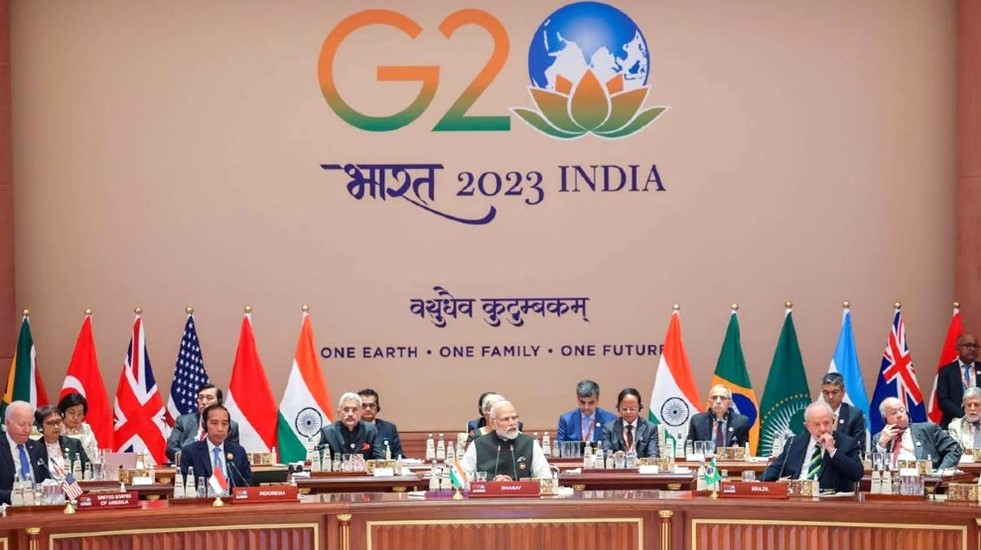
With the cloud of the Ukraine war hanging over, most observers were speculating that there would be no unanimously approved declaration at the end of the summit. Not having such a declaration would have given Modi’s opponents in India a nice weapon to berate him with for all the hype around the G-20 meet. The piece de resistance for Modi was the unanimous declaration as the final end product of the summit, several hours ahead of the concluding session.
Modi scored another memorable feat at the G-20 meeting by making the members quickly adopt his proposal giving full membership to the African Union, to represent the African Continent in future meetings. India has been making a case for giving full membership to the Global South, even when some of these countries are above the Equator. Previously the First World came up with pejorative term Third World Countries, and the less offensive term LDCs (Least Developed Countries) for these countries. Ironically, the First World colonized and exploited these countries for centuries, making them poor, in the first place.
4. Chandraayan-3 Landing on the Moon: While Modi was in Johannesburg, South Africa attending the BRICS-Plus conference in August 2023, the Chandraayan-3 made a safe and smooth landing on Moon’s south pole, which gave him and India all the attention at the meeting. This was a political windfall for Modi, who has been trying to highlight India’s scientific and technological skill. Just imagine if the Moon vehicle had crash-landed. Talk about good fortune for a politician!
5. Indian Americans in the Presidential Race: The GOP primaries were the stage for the ugly slugfest between Vivek Ramaswamy (parodied as Vee-veck by his GOP opponents) and Nikki Haley — giving great entertainment not just for the desi community in US, but for Indians back home and the whole USA. An unbelievable scenario indeed!
Nikki Haley is a twice-elected governor of South Carolina, no mean achievement for an immigrants’ child. During her second term in the governor’s mansion in South Carolina, President Trump appointed her as the US ambassador at the UN, a big stepping stone in her political climb. She converted into Christianity from her Sikh faith before entering electoral politics. But her Christian faith is not clean cut. See here: www.religionnews.com/2023/02/16/nikki-haley-says-shes-christian-but-its-complicated/
Vivek Ramaswamy, a total newbie in the American politics, has not contested even for a school board election in his affluent neighborhood in Columbus OH. His foolhardy attempt to seek the office of the president gives a comic relief to this farce. Born to riches, he piled on millions through successful investments in biopharma industries. In the blood sport of American politics, he is trying to succeed where even the Blue-Blooded Texan Ross Perot could not. Before he gets the GOP nomination, his ancestral village in Kerala has to get a snowstorm.
If Ramaswamy thinks that he can snag a powerful post as a VP or a cabinet office through his foray into the presidential race, his chances are slim. His brash way of articulating his views and his immense wealth and lack of grassroots GOP support are impediments for any president to give him a political appointment.
Further, it is highly unlikely that either of Vivek or Nikki can challenge the Trump for the GOP nomination. (Trump’s nomination is under cloud because of the Colorado Supreme Court decision.) And if Trump eventually becomes the GOP candidate for the 2024 presidential election, and he chooses Nikki as his VP candidate, she has to suffer through the humiliation of working as his deputy. But then in life, particularly in politics, ambition makes one thick-skinned with little shame.
6. The Ongoing Israeli-Palestinian Conflict: The long story of this conflict is traceable to European colonial occupation – by the British and the French — of the region between 18th and 20th centuries. This was compounded by the US involvement in the region as the leading superpower after WW-II. The end of the war gave birth to the nation-state of Israel in 1948 after the defeat of the Nazi Germany. With more Jews living in the US (estimated to be over 7.5 million) than in Israel itself (under seven million), the US became the de facto protector of not only Israel formed in 1948 but also of the Jewish Diaspora worldwide.
The latest Israeli-Palestinian conflict is like active volcanic eruptions and earthquakes. Every once in a while, active volcanoes have to erupt spewing millions of tons of debris into the sky; and active fault zones have to release the mounting pressure in earthquakes when slowly moving huge blocks of tectonic plates running for hundreds of miles press against each other. The longer the gap between any two quakes or volcanic eruptions, the more devastating the eruptions and quakes are and the damage they inflict on the people living in their vicinity.
The latest one that Hamas started in October 2023 with devastating effect was more lethal (with more than 1400 Israelis killed inside Israel and several tens taken as hostages) by the Hamas intruders and rocket attacks. Even in the 1967 Arab-Israeli war only seven hundred Israelis were killed. Given the far superior strength of the Israeli military, Hamas knew how Israel would respond. Respond, Israel did, with devastating effect with over 20,000 Gazans killed (with a kill ratio 15 to 1 in favor of Israel), and most of the Gaza infrastructure, including hospitals, reduced to rubbles.
Cynically looking at it, perhaps this is what Hamas wanted. Consider this: the Islamic Turkey, inheritors of the Ottoman Empire, already has diplomatic relations with Israel for a long time, even though the two countries blow hot and cold, depending on the conflict du jour. Influential Arab states – like the UAE and Bahrain — recently opened diplomatic relations with Israel. And Saudi Arabia, the most visible Arab and Muslim influencer globally, was close to recognizing Israel.
If the Arab world accepts Israel by opening embassies and trade and cultural exchanges, the Palestinian issue will further recede in the rear-view mirror for the US, EU, Russia, and even China and other countries that matter. And other Muslim countries like Pakistan will be forced to fall in line. This is precisely what the Hamas did not want. Now, with the latest escalation started by Hamas, the Arab-Israeli diplomatic thaw is put in deep, deep cold storage for the next two decades.
The Arab-Israeli conflict will continue for the foreseeable future with periodic eruptions. The Abrahamic Faiths – Judaism, Christianity, and Islam — throughout their over two millennia old history have been living with each other in perpetual conflicts, persecution and/or war approved by their faiths. Given this leitmotif, the only way for the region to live in peace is for the three religions to physically and psychologically exhaust themselves of mutual hatred and accept the inevitable need for coming to terms with each other. They will then, and only then, learn to live – and also let live – with each other in a pluralistic society.
7. The United Nation is Now Irrelevant: In the midst of the Ukraine war and the Hamas-Israeli conflict, one thing becomes clear even to someone with only cursory interest international politics. The United Nations, with its 5-member Security Council with veto power and bloated bureaucracy, has an abysmal track record for resolving conflicts or ending outright wars that have killed tens of millions of innocent civilians – Korean Wars, Vietnam, Reagan-Era wars in Central America, all the Arab-Israel conflicts, the deaths of Christian and Muslim civilians in the erstwhile Yugoslavia,, and the US-instigated wars in Iraq, Kuwait, and now the Ukraine war.
The UN has become a exclusive public club of 190-plus nation-states for their fancy annual jamboree in NYC every September where the fall weather is excellent. These guys with their family and sidekicks land in New York for a week-long excursion to hobnob with other heads of states and senior bureaucrats at their taxpayers’ expenses. These senior bureaucrats burnish their resume and renew their contacts for their post-retirement avatars as highly paid consultants. American diplomats top this list.
The presence of UK and France in today’s UN Security Council with veto power is anachronistic. Their veto power in the Security Council is a relic of their ignoble colonial past. The world has changed in the last seventy years. With UN’s mediocre track record in resolving conflicts, one wonders why it even exists today.
It is time the UN takes a lesson from stock exchanges to stay relevant. The stock markets routinely change the companies in their stock indices to stay relevant as the business environment changes. For example, the once-stellar companies — Alcoa, GE, AT&T, ExxonMobil, Pfizer, and others — in the thirty companies in the Dow-Jones-30-Average are no more in the list.
8. Indian Supreme Court Confirms the Indian Parliament’s 2019 Abrogation of Article 370 and 35A on Kashmir’s Special Status: In early December 2023, the Indian Supreme Court put its stamp of approval for the Modi government’s abrogation of Article 370 and 35A in August 2019 passed in the Indian parliament with two-thirds majority. In a unanimous decision, the 5-member Constitution Bench gave its approval without any qualifying Ifs and Buts.
The Kashmir problem festering for over seven decades and with 3½ wars started by the (mis)adventurous Pakistan, is finally laid to rest at least inside the charged atmosphere of Indian political discourse. Major opposition political parties recognize that with no support from Indian voters for continuing with the Kashmir special status, it is time to move on. They also realize that it is they — mainly the Congress party — who let this problem fester for so long.
The nuclear-powered Pakistan could do nothing else even with its 500,000 strong “battle-hardened” army and 200-plus nuclear bombs with supersonic long- and short-range delivery systems.
9. Pakistan’s Predictable Reaction: As expected, the Pakistan’s political and military establishment, media houses and think tank members hyperventilated and went ballistic on the Indian court decision. But Pakistan’s economy is in ICU, kept alive by only with frequent IMF bailouts and the Ummah and China money, its political leadership is the weakest. Inflation rates over 40% and interest rates of 23% are making life miserable for its citizens.
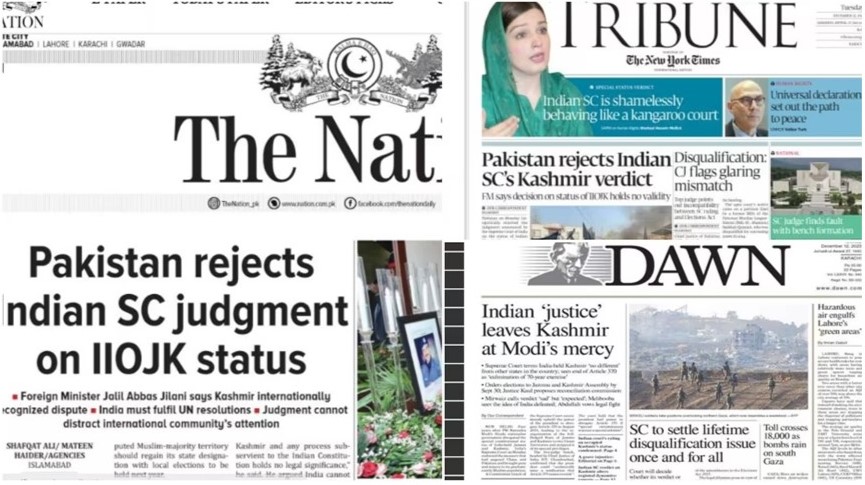
Pakistan was dismayed that the Muslim Ummah — from Morocco to Indonesia — just shrugged off at the Indian court decision. With the on-going Hamas-Israel conflict and the Ukraine war to deal with, dissenting notes from the UN and other Western capitals were missing, much to Pakistan’s chagrin.
Meanwhile, in the past ten years prime minister Modi has bettered his and India’s multifaceted relationship with all Arab and Muslim nations, making it attractive for them to invest in India and in Kashmir.
10. India-Pakistan Relations Will Continue in the Deep Freezer: With the Indian Supreme Court’s okaying the abrogation of special status for Kashmir, in future India-Pakistan negotiations for improving strained relations, the space has shrunk enormously for Pakistan for discussing Kashmir either as a bilateral issue, or as an international issue. So, when new governments come to power in India and Pakistan in 2024, we can only expect at best that the current no-war-no-peace status quo to continue.
Pakistan is in a mess. On every metric as a nation-state, it is at the nadir now, and it will take over 20 years to come out of the mess. Pakistan’s military and political establishment, its madrasas and Islamic scholars have soaked to saturation its young population in a marinade of hatred for India, its composite culture and civilizational grand narrative. Pakistan is teetering on the edge of bankruptcy. Its bloated military with over two hundred nuclear weapons and delivery systems is sitting over its nominally elected democratic national government.
For now, there is no room even for any baby steps for improving India-Pakistan relationship. Forget about Aman ki Asha or neighborly mohabbat. The two nations have complex histories for over one thousand years with diametrically opposite perceptions from each side. The best one can hope is for the two counties to learn to live with each other with deep suspicion and device mechanisms to avoid any armed conflicts, which always have unintended consequences. The booming India does not want it, and the precarious Pakistan cannot afford it. One hopes both recognize this. ∎
BOOK REVIEW — The Covenant of Water by Abraham Verghese
Posted by admin in Current Issue on December 25, 2023
Reviewer: Mary Ganguli, Pittsburgh, PA
For those familiar with the Indian American physician author Abraham Verghese (earlier books: My Own Country, The Tennis Partner, Cutting for Stone), his latest novel The Covenant of Water (Publishers: Grove Press, 2023, 736 pages) ) has been a long time coming. For those new to him, Dr. Verghese is a Professor of Medicine at Stanford University. Born and raised in Ethiopia by Indian parents, he attended medical college in Chennai and then emigrated to the US. Verghese is a master storyteller and has a way with words that draws the reader into his narratives which are beautiful but can at times be downright painful.
And now along comes his fourth book, The Covenant of Water, set mostly in Kerala during the first three quarters of the 20th century. It is a sweeping family saga covering generations of Malayalis (specifically St. Thomas Christians, Verghese’s own community) with the strange family history that one person in each generation dies by drowning. The book recounts its characters’ lives which become entangled in different ways, anchored in historical developments in India during those times; it includes medical, surgical, and obstetric themes skillfully tied into the narrative.
There are characters to be developed and mysteries to be solved and plots to be unraveled, mostly set in the lush landscapes of Kerala with its green rice paddy fields and flowing rivers and backwaters. As one would expect, a few of the characters are doctors. While reading the book I often wished the author had provided a family tree, but eventually realized why that was difficult. Take notes if you need to! Despite the complexity of the plot, and the multiple story lines that have to converge, Verghese keeps the reader engaged. The main reason is the captivating story, but another is the obvious love with which he crafts his descriptions of scenes and sounds of his native land.
Another is the sheer richness of his language; a small description I cannot get out of my head is his description of an embankment covered with touch-me-not flowers – thottaal-vaadi in Malayalam – that tremble like a shy colt when touched.
Of course, there is more to the book than the story. For me, as a Malayali who attended medical college in Tamilnadu, it is impossible not to be delighted by recognizing familiar places and sounds and experiences. I suspect readers from other parts of India will experience the book differently and enjoy the descriptions in a different way. American readers not of Indian background will of course find it exotic as well and perhaps start looking for tourism opportunities in “God’s Own Country.”
In the spirit of full disclosure, I saw a very early draft of the novel, provided some information and comments. ∎
KuVemPu, the 20th Century Kannada Poet — Par Excellence
Posted by admin in Current Issue on December 25, 2023
By Nangali Srinivasa, Murrysville, PA
Nangali Srinivasa, a resident in our Metro area for over 30 years, is from Bengaluru, Karnataka. Well-versed in Kannada, Telugu and Hindi, his interest is in contemporary Kannada literature. He is active in various roles at the Sri Venkateswara Temple. Here Srinivasa shares with readers the wonder that the famous 20th century Kannada poet Kuvempu felt and wrote in a poem on visiting the famous Hoysaleswara Somnath Temple in Karnataka, built in the 10th century by the Hoysala King Vishnuvardhana. The temple was later ransacked by the armies of the Delhi sultanate in the 14th century. Srinivasa is the chief of nephrology in UPMC East.
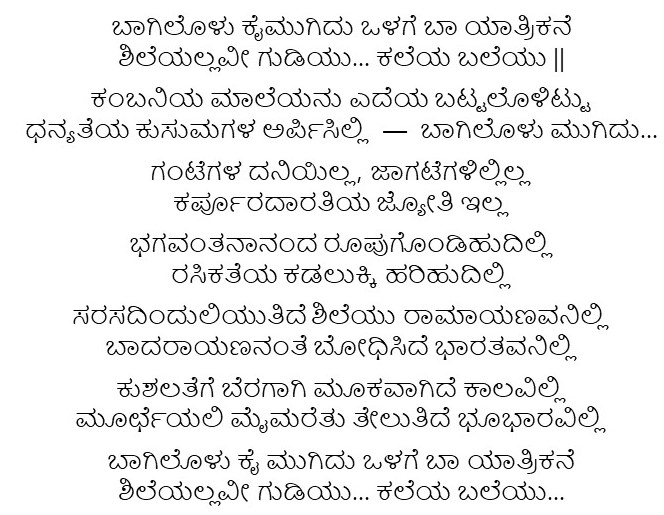
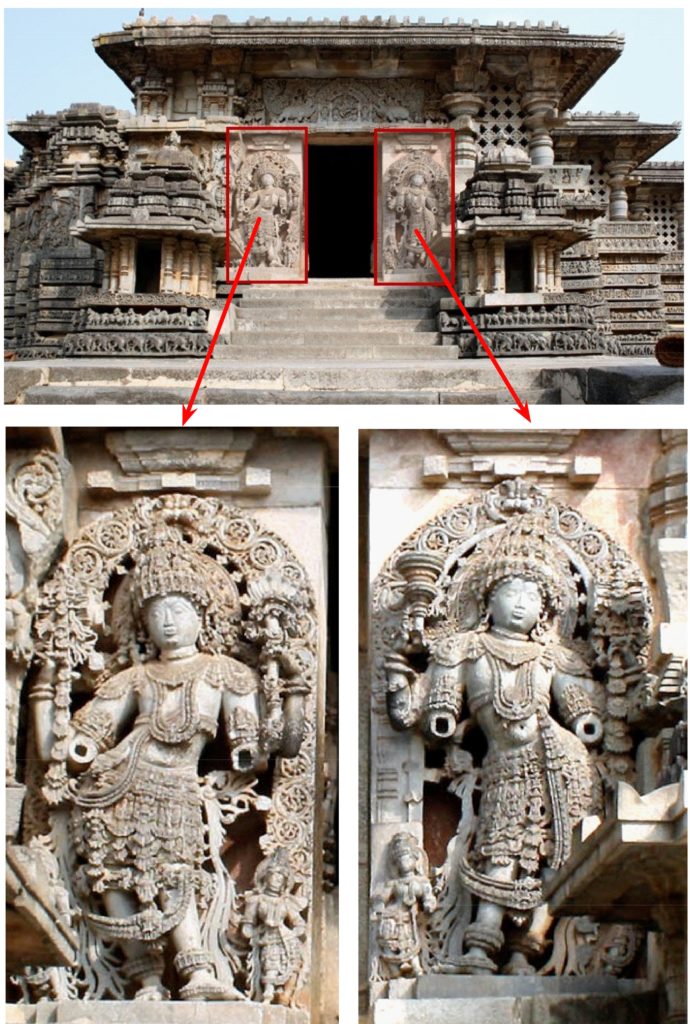
…………………………………………………………..
O pilgrim, offering your respects at the entrance,
please come inside with folded hands.
This temple is not just a pile of stones ––
It is, indeed, a web of artistic treasure.
Keeping the garland of tears in your heart,
offer your flowers of gratitude here!
Bells and gongs do not ring here, nor do conches blow.
No oil lamp is lit, nor the flame of camphor burn.
Yet, a divine bliss and energy pervades all over.
And an ocean of aesthetic beauty overflows here.
These sculptures delight you with Ramayana stories.
Like the sage Badarayana, these sculptures
chronicle Mahabharata stories too!
Stunned and astonished at the architectural beauty,
time stands still in trance; and earth floats in amazement!
O pilgrim, offering your respects at the entrance,
please come inside with folded hands.
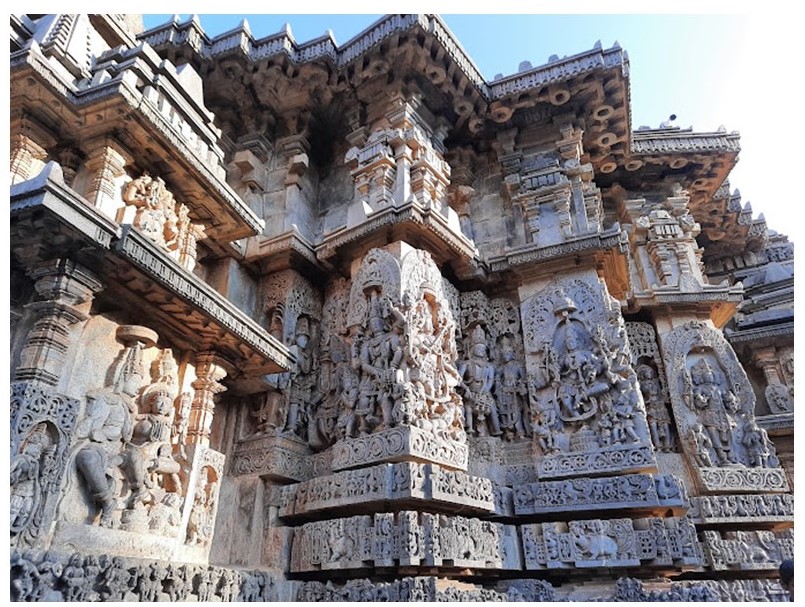
A Brief Background on KuVemPu
Kuppali Venkatappa Puttappa (29 December 1904 – 11 November 1994), popularly known by his pen name Kuvempu, was an Indian poet, playwright, novelist and literary critic. Widely regarded as the greatest Kannada poet of the 20th century, he was the first Kannada writer to receive the Jnanapith Award.
Kuvempu studied at Mysuru University in the 1920s and taught there for nearly three decades before serving as its its vice chancellor from 1956 to 1960. He initiated education in Kannada as the medium of instruction. For his contributions to Kannada literature, the Government of Karnataka decorated him with the title Rashtrakavi (National Poet) in 1964 and Karnataka Ratna (The Gem of Karnataka) in 1992. He was conferred the Padma Vibhushan title by the Government of India in 1988. He penned the Karnataka State Anthem Jaya Bharata Jananiya Tanujate (O Daughter of the Victorious Mother Bharat). ∎
Obituary: Vinod B Doshi, Beloved Husband, Cherished Father & Grandfather, Distinguished Engineer and Founding Member of the Hindu-Jain Temple (1936 to December 11, 2022)
Posted by admin in April 2023, Past issues on March 30, 2023
Vinod B. Doshi, age 86, our father, passed away peacefully on Sunday, December 11, 2022, surrounded by his loving family. He was 86. He was born in Calcutta, India, on October 8, 1936 the older of two children to the late Shri Babulal and Smt. Chabalben Doshi.
He and his late wife and our mother Indu were married for 52 years and the proud parents of three children and six grandchildren: Anita Doshi Carleton (son-in-law Dennis, grandchildren Neil and Kellen); Salil Vinod Doshi (daughter-in-law Bijal, grandchildren Shay and Reveen); and Nisha Doshi Westerman (son-in-law David, grandchildren Pria and Cole).
He graduated from the most prestigious engineering college in India, the Indian Institute of Technology, and he enjoyed a rewarding career at Westinghouse and Siemens designing power generation systems and was an inventor on many patents. He was passionate about the Indian community in Pittsburgh and was instrumental in its growth, serving as a founding member of the Hindu-Jain Temple.
He was the president of the Jain Society of Pittsburgh, co-convener of the JAINA Convention in Pittsburgh, active in JAINA (Federation of Jain Associations in North America), and instrumental in establishing the Gujarati Samaj in Pittsburgh.
He enjoyed travel all across the globe with his wife, children, and friends over the years. He loved passionately cheering for the Pittsburgh Steelers, Penguins, and Pirates.
A traditional Jain Funeral Service was held for our father on Sunday, December 18 at the Beinhauer Funeral Home in Dormont, PA. Pandit Suresh Chandra Joshi from the Hindu-Jain Temple guided our family with the Jain cremation rites. After the funeral service, a Celebration of Life Luncheon was held at the Hindu-Jain Temple Hall. ∎
Obituary: Vijaya Rao, An Affable Early Indian Immigrant and Silent Volunteer at the S.V.Temple (1942 to February 19, 2023)
Posted by admin in April 2023, Past issues on March 30, 2023
Vijaya B Rao, a long-time resident in our area, wife of the late Raja B Rao, of Penn Hills, PA passed away peacefully on Sunday February 19, 2023 with her loving family by her side. She lived in Penn Hills for decades before moving into hospice care towards the end.
Vijaya came to this country in 1967 along with her husband Raja Rao, who was teaching statistics at the University of Pittsburgh, and young son. She and her husband were able to create a lively life for themselves and their two children. They always kept their faith and roots to India very close to their heart.
In 1976 when the concept of a Venkataswara temple was first mooted by their friends, Vijaya and Raja Rao were quite excited to join the cause. The temple became a community they immersed themselves in. It became for them a home away from their home in India. She and her husband were long time members of the temple where they spent countless hours as devotees and volunteers. They took keen interest in the music and dance programs organized at the temple in those early years.
Vijaya also enjoyed spending time with her family and friends. She was well known among her friends as an excellent cook and a reliable friend. She also enjoyed playing with her dog grandchildren, Cody, Ellie, Lucy & Coco.
At the request of Vijaya, her family conducted a private funeral and cremation ceremony following Hindu traditions at the Beinhauer Funeral Home on West Liberty Ave, Dormont.
Left to cherish Vijaya’s memory are her son Harish Rao, his wife Swati of Dallas, Texas; her daughter SriDevi Rao James and her husband Mark James of Oakdale, Pennsylvania; and her grandsons Anish and Anjay Rao and her granddaughter Taylor James as well as several nieces and nephews here and in India. After the death of her husband Raja B Rao in 2001, she lived independently with the continuous support of her daughter Sridevi, who is in the nursing profession.
A special thanks to the Celebration Villas and Bridges Hospice as well as her close friends who provided excellent care and her favorite Indian dishes. — By a friend of Vijaya Rao ∎
Montessori Pre-School in Monroeville Helps Children to Naturally Acquire Learning Skills
Posted by admin in April 2023, Past issues on March 30, 2023
By Sandra Durkin, Mars, PA
Editor’s Note: Ms. Sandra Durkin is a 28-year veteran consultant in early childhood education. Her background has been in psychology (LaRoche University) and American Montessori Society’s Early Childhood Teaching (Carlow University). With Pennsylvania Teaching Certification and active participation in several leadership programs, Sandra owned and ran the state-licensed Garden Montessori School in Cranberry Township from 1999-2020 with 65 children, offering extended care, enrichment camps, Spanish, and summer camps.
Keystone Montessori School in Plum Boro has been offering multi-age Montessori programs in the Monroeville area for over fifteen years, serving children from ages twenty months through kindergarten. Three age groupings in the school enable each child to stay with the same teacher, with the academic year running from September through May, and half-day camps continuing through the summer. The school is located at 3245 Old Frankstown Road, Plum, close to Business 22 and the PA Turnpike.
Owner-Administrator Linda Franke has designed the Montessori program with adequate resources at her school to meet the needs of the children, as well as the needs of families. Her lifelong work and commitment to Montessori education is summed up by her favorite quote: “Teach children to learn to do it by themselves.”
When children begin this unique experience at twenty months, they are eager for independence, and the PROCESS of learning gets instilled in a natural learning environment. They seek more challenges, observing and learning from older children.
Keystone classrooms offer several carefully selected hands-on activities for each child to build a foundation for concrete learning. Dr. Montessori’s famous quote “The hand is the teacher of the mind” is an all-encompassing summary of the core of the philosophy at Linda’s school. Montessori believed that the most important period of learning occurs from birth to age six through the “Absorbent Mind,” what people often refer to as children being like “sponges.”
The environment at the Keystone School utilizes activities in practical life, sensorial experiences, language, phonics, math, and geography, with certified Montessori teachers designing the enticing activities, increasing in difficulty with each step. The children actively engage in worldwide cultural experiences through participation of multicultural families of the children in the school.
Children progress individually at their own pace, based on their natural instincts, and skills they develop and master in the class room. The older children can teach, lead, and serve as role models, which increases their self-esteem and confidence.
The Keystone Montessori School offers Peace Education and conflict resolution in its curriculum, incorporating the “Peace Rose” and daily practice of the virtues of good behavior. The children demonstrate their understanding polite interactions with their peers in the class.
Feel free to contact Linda Franke at Keystone Montessori School for more information and enrollment opportunities at:
The Keystone Montessori School
3245 Old Frankstown Rd., Plum, PA
www.KeystoneMontessoriPGH.com
keystonemontessori@gmail.com Landline: 724-733-1015 ∎
Obituary: Manjula Germanwala, A Dedicated Volunteer, an Optimist with Passion for Books (1945 to December 17, 2022)
Posted by admin in April 2023, Past issues on March 30, 2023
By Shambhavi Desai, Bridgeville, PA
Manjula V. Germanwala, a resident of Pittsburgh for over fifty years and a well-known name in the community, died on December 17, 2022, with her loving husband, Vasant, at her side. Manju-ben, as many of us called her, was born on January 29, 1945 in Worli, Mumbai to Savita and Mulchand Kansara in an affluent family. Youngest among all her siblings, she was bold, intelligent, caring, spiritual and gracious inside out. She did her schooling and started her college education in Mumbai. Manju-ben was engaged to Vasant Germanwala in 1963 and they were married in 1967 after coming to the US. They were married for 55 years.
While raising her family here, Manju-ben, with full support from her husband, graduated from Point Park College with a degree in microbiology. Her passion for reading and books led her to work at B. Dalton Booksellers at the Parkway Center Mall for eighteen years, where she became the manager of the store. Later, she worked as an administrative assistant at the Greentree Medical Associates for seven years before retiring in 2006.
Manju-ben was active in several organizations: a devout member of the Hindu Jain Temple and the Chinmaya Mission Pittsburgh, a volunteer at the Alliance for Humanitarian Initiatives, Nonviolence, and Spiritual Advancement (AHINSA), and at the Sai Family of Pittsburgh.
An exemplary leader, community activist, and a committed volunteer, she (with her husband Vasant) gave time for over forty years to several organizations including Meals on Wheels (www.mealsonwheelsamerica.org), delivering meals to senior citizens, who often live alone. She was also at the Kiwanis Club of Pittsburgh, and Beginning with Books, an organization of experts dedicated to nurture literacy among pre-school children, running workshops on early literacy topics to parents, teachers, and caregivers.
Her husband Vasant lovingly recalls, “She would always try her best to keep a positive attitude even in the most adverse situations.” Manju-ben’s passion was music. I vividly remember her singing with great zeal, not only bhajans but also an old Hindi movie classic, Afsana Likh Rahi Hun…, as the senior most contestant at Tarana, a music event organized jointly by the Gujarati Samaj of Greater Pittsburgh and the Maharashtra Mandal of Pittsburgh in 2007.
Manjuben is survived by her husband, Vasant Germanwala; her older son, Samir, daughter-in-law, Gana, and their children, Arya and Alec; and her younger son, Anand, daughter-in-law, Arpita, and their children Atasi and Anika. Her Hindu cremation was at the Beinhauer Funeral Home on Wednesday, December 21, 2022, with Pandit Sureshchandra Joshi helping her family with the cremation rites. Her friends will always remember Manju-ben as the selfless person that she truly was, for all the volunteer work she did for the community and her infectious smile with a twinkle in her eye. ∎
My First Chinese HotPot Dinner
Posted by admin in April 2023, Past issues on March 30, 2023
European formal dinners follow dress codes and a system of what course follows which one and the array of silverware to eat the dishes.
Presentation, visual appeal of the meal, and the ambience, not to speak of the company we share the meals with, are as important as the variety and taste of the dishes served.
In the Middle East a shared plate fosters clan unity and cohesion. In the Sikh Gurudwara communal eating during the langar meal is an important part of their worship. Japanese platters are as decorative as they are appetizing, complementing colors and shapes with the taste of the dishes. Dramatic hibachi-made food conveys all the essence of a drama, with the chef posing as a Samurai warrior cutting meats and vegetables following strict protocols for the sizes and shapes, while showing off his dexterity with the ultra-sharp knife and forks.
In traditional wedding dinners in South India, even today there is an elaborate scheme for placing the different items on banana leaves. Each item — like salt, achars, banana chips, pappads, curries, dal items, raithas, and payasams (kheers), and cooked rice — in the sadhya (banquet) has a specific spot on the banana leaf layout. And you can start eating only when everybody’s banana leaf is served with all the items. Further, each item in the banquet, like sambaar, moru-koottan (similar to the North Indian kadi) rasam, and paayasams come in a specific sequence. Today’s buffet-style Indian wedding dinners with people filling their 10” dia plates with all items in one go and in one heap would be considered uncouth and barbarian.
In Chinese banquets, groups of people sit around a circular table ordering 10 to 20 items placed on a slowly rotating carousel in the middle. People take their seats following a strict hierarchy. As the items in large plates come to you on the slowly rotating carousel, using chopsticks, you pick whatever you like onto your eating bowl/plate.
The Chinese HotPot, whose history goes back over one thousand years, is another setup for sharing a meal in homes and in restaurants. The HotPot indulges and encourages the inner chef in you to mix and match and make your own very light broth, with your own combination of sauces and toppings. You thus create an aromatic, flavorful, spicy, and steaming hot mix in a large vessel kept right in front of you on the dinner table.
Then you add your choices of meats, vegetables, and noodles into the steaming hot broth and cook them till it is done. Everybody at the dinner table then helps themselves with the broth and the items they cooked into a smaller bowl and eat them slowly. Pre-made appetizers are served first.
I had heard of this cuisine from many but had not sampled it myself. We were in New York City during the Chinese New Year this January. We went to Chinatown for the festivities and completed it with a HotPot lunch on a cold winter day.
The menu card looked complicated with a wide array of meats, vegetables, noodles, and appetizers to choose from. First we decided on the most important item — the broth we would use to cook our chosen items. With a lot of help from our grandkids, who have already had the HotPot meals and loved them, we made our selections. We chose Sriracha-flavored broths with minced ginger and garlic and soy sauces. Then we were lead to a buffet with an array of toppings and sauces to mix and match to add to our broth. Some I recognized like Hoisin sauce and Sriracha but encountered some that I had not heard of. I made a selection of it on a plate and seated myself ready for the meal.
The waitress arrived with platters and platters of the items our family had chosen to add to the broth. So many vegetables, greens, meat slices, appetizers like tiny egg rolls, wontons, not to mention a variety of noodles.
Soon she turned on the induction heaters installed in the middle of the table with a range of options — simmer, low and medium heat, and boil at a typical HotPot dinner table — and placed large mixing bowls in the heater. She poured the steaming broths from kettles into the mixing bowls. We then added the vegetables and other items into the hot steaming broth and let them simmer and cook right in front of our eyes — we were our own cooks, sort of.
We were given small individual bowls to ladle out the steaming broth and cooked veggies into our bowls; after adding it with our thick sauce mix and toppings, the resulting uniquely concocted one-of-a-kind dish was ready to quell our appetite. Since it was flavorful and piping hot, it was a treat for our senses and so satisfying for a cold day outside. And it surely opened up our sinuses.
The waiter replenished the light broth as we emptied and we ate the vegetables and drank the light broth (much like the traditional south Indian rasam) to our hearts’ content. But much like eating the Vietnamese Pho, the HotPot meal filled us up with mostly water and vegetables. It was wholesome and satisfying.
Verily, this way of serving food is amazing in our times. A low-cal meal with healthy ingredients and minimum fat, at the same time flavorful, tasty, and spicy and satisfying to our palate. It is a rare combination.
Most big cities in North America have several HotPot restaurants Pittsburgh too has a few HotPot restaurants for you to explore, around the city and in Oakland.
If you are adventurous, you can easily setup your own HotPot dinner table for 4 to 6 people in your homes: the tabletop portable induction heater shown here is under $100, and a few other simple vessels and bowls. You can select all the Indian, Thai, and Italian spices and herbs you want to create your own one-of-a-kind broth create with your own array of green vegetables, roots, tofu, mushrooms, vadis, and noodles and meats (if you want)… And enjoy your HotPot dinner with your friends, with a glass of wine or a bottle of beer. ∎
Be Like A Sun!
Posted by admin in April 2023, Past issues on March 30, 2023
Juginder Luthra, Weirton, W
……
……..
……..
……………….
…………………………..
…………………………….
………………………………
Illuminate whatever you touch
Be a giver, receivers misery too much
Your light free for all, seek nothing back
Recipients circle spin, keep coming back
Give life to others, unaffected by them
They use or misuse not for you to judge
Others may take you for granted
Keep glowing even if feel unwanted
You were born to shine, stay detached
Spend days giving, no strings attached
Be not proud of your bright rays
One who made you gave limited days
So my daughter and my son
Stay bright and giving like a sun
Be a sun ∎
Boom-Bust Cycles Are Typical in the US Economy
Posted by admin in April 2023, Past issues on March 18, 2023
For all the gloss the IT industry uses to describe itself, the response of its American CEOs during the system-wide layoffs were trite and very unoriginal. Unlike their muscular CEO brethren in the steel and auto industry, whose decline several decades ago wiped out hundreds thousands of muscular blue-collar jobs, these IT CEOs were contrite and apologetic. Using copycat vapid phrases for not assessing the situation correctly, they took personal responsibility for the layoffs.
It was ironic that these IT industry giants, as they themselves claimed, had all the software tools for gathering the needed data to predict the future under different scenarios to advise their clients for making business decisions and improving productivity, of course, using their expensive consulting services. This reminded me of a colloquial Tamil proverb,
meaning, “The teacher’s son is an idiot and the doctor’s son is sick.” Or more to the present context,
meaning, “The teacher himself is dumb and the doctor himself is sick.”
Many companies offered expanded severance packages to their laid off employees to lessen the pain. Often, these companies also employ large number of TVCs [temps, vendors, and contractors] working on their campuses. But these TVCs are not covered for the severance package since they are not in the companies’ payroll.
Here are contrite, unoriginal e-mails from the CEOs of IT giants, as if they copied from each other explaining the layoffs to those who they fired:
Sundar Pitchai CEO of Alphabet, which owns Google:
Googlers:
I have some difficult news to share. We’ve decided to reduce our workforce by approximately 12,000 roles. We’ve already sent a separate email to employees in the US who are affected… …
This will mean saying goodbye to some incredibly talented people we worked hard to hire and have loved working with. I’m deeply sorry for that. The fact that these changes will impact the lives of Googlers weighs heavily on me, and I take full responsibility for the decisions that led us here.
Over the past two years we’ve seen periods of dramatic growth. To match and fuel that growth, we hired for a different economic reality than the one we face today.
… … To fully capture it, we’ll need to make tough choices… … While this transition won’t be easy, we’re going to support employees as they look for their next opportunity.
Satya Nadella, Microsoft:
… … We’re living through times of significant change, and as I meet with customers and partners, a few things are clear. First, as we saw customers accelerate their digital spend during the pandemic… [now they want] digital spend to do more with less. We’re also seeing … parts of the world are in a recession and other parts are anticipating one… [and] the next major wave of computing is being born with advances in AI…
This is the context in which we as a company must strive to deliver results…[requiring] us to take actions grounded in three priorities.
First, we will align our cost structure with our revenue … result[ing] in the reduction of our overall workforce by 10,000 jobs through the end of 2023. This represents less than 5 percent of our total employee base… … We know this is a challenging time for each person impacted. The senior leadership team and I are committed that we go through this process in the most thoughtful and transparent way possible.
… [W]e will treat our people with dignity and respect, and act transparently. These decisions are difficult, but necessary. They are especially difficult because they impact people and people’s lives – our colleagues and friends… U.S.-benefit-eligible employees, will receive a variety of benefits, including above-market severance pay, continuing healthcare coverage for six months, continued vesting of stock awards for six months, career transition services…
Zuckerberg, FaceBook:
Today I’m sharing some of the most difficult changes we’ve made in Meta’s history. I’ve decided to reduce the size of our team by about 13% and let more than 11,000 of our talented employees go. We are also taking a number of additional steps to become a leaner and more efficient company by cutting discretionary spending and extending our hiring freeze through Q1.
I want to take accountability for these decisions and for how we got here. I know this is tough for everyone, and I’m especially sorry to those impacted…
https://www.heartandbustle.com/At the start of Covid, the world rapidly moved online and the surge of e-commerce led to outsized revenue growth. Many people predicted this would be a permanent acceleration that would continue even after the pandemic ended. I did too, so I made the decision to significantly increase our investments. Unfortunately, this did not play out the way I expected. … [and] our revenue [was] much lower than I’d expected. I got this wrong, and I take responsibility for that.
Elon Musk, Twitter:
Elon Musk’s Twitter cut 50% of the company’s workforce, including its contractors. He tweeted his sympathies: “Folks at Twitter past and present are strong and resilient. They will always find a way no matter how difficult the moment. I realize many are angry with me. I own the responsibility for why everyone is in this situation: I grew the company size too quickly. I apologize for that.”
Niraj Shah, Wayfair:
Last August, furniture retailer Wayfair said it would let go of 900 people, or about 5% of its workforce. In a published letter, CEO Niraj Shah wrote: “Over the past few years, we’ve grown Wayfair significantly to keep pace with the e-commerce growth in the home category. We were seeing the tailwinds of the pandemic accelerate the adoption of e-commerce shopping, and I personally pushed hard to hire a strong team to support that growth. This year, that growth has not materialized as we had anticipated. Our team is too large for the environment we are now in, and unfortunately we need to adjust… I take responsibility for the impact this decision will have on the nearly 900 Wayfairians who will be told today they are no longer a part of building our company’s future.”
Are these systemic layoffs anything new for American businesses? No. These are familiar for those who lived through earlier gut-wrenching transitions in our own times caused by self-inflicted wounds. During the 1970s when the steel industry died in the US, tens of thousands lost their jobs, causing a deep decline of many towns and cities (like Pittsburgh) in the Rust Belt.
Later, the American auto industry declined seriously only to reinvent itself copying the Japanese, after ridiculing the same Japanese compact fuel-efficient cars. The closing down of the full-fledged automobile plants in rural American towns turned them into graveyards.
The S&L bailout followed, and when the real estate bubble burst, many ended up owning huge mortgages on homes that lost their market values. In the wake of the Y2K, tens of thousands of Indian IT temp workers all across the US were dumped on the streets. The Dot.com bubble burst was the next with huge job losses. Then in the Wall Street melt down in 2008 job losses were in the millions across the board in the US.
Even NASA was not spared in the boom-bust cycle. Hundreds of thousands of people were employed in the 1960s directly by NASA and indirectly by subcontractors making components needed for the moon mission. After the Moon landing when an American Stars & Stripes was planted on the Moon, NASA had to shrink and tens of thousands of employees were let go. Again, when the US Congress stopped the space shuttle program in 2011, NASA laid off thousands of skilled engineers and technicians.
The latest IT layoffs are only following this pattern of what American businesses go through: incubation and euphoria on new businesses and technologies with speculators jumping into the fray ushering in explosive growths of a whole new industry. Innovators become icons, only to see their innovative and avant garde businesses becoming one more “mature” and “regular” corporation needing run-of-the-mill managers, bean counters, and lawyers, HR & PR folks to manage the layoffs.
This boom-bust cycle has been common in the US since the early days of its industrialization in railroad, banking, gold and copper mining in the Western States, and drilling for oil and natural gas. In this template, the American Dream is fulfilled for those who succeed, and the American Nightmare unfolds for those who struggle to barely survive, with many succumbing along the way. History is replete with these stories in many books for those who care to know.
Every society has its own culture, irrespective of the constitutional and legal framework in which it operates. If the society is large enough in land mass (as the US is), or complex enough (as India is), it also has subcultures within the big umbrella.
How many Indian IT companies spend their time and resources educating their employees on their business, and the cultural backdrops of their clients in different countries to which they depute their employees?
And how many Indian IT companies manage their risks by diversifying their market segments in Central & South America, Africa, the Persian Gulf countries, Southeast & East Asia? And in the huge Indian domestic market in the small and medium industries and retailers in second and third tier cities? These market segments will NOT give them 20 to 30 percent annual growths. But they will certainly help them to spread the risk to mange the economic downturns and wean them away from over-dependence on the industrialized West, as seems to be the case now.
And how many university-educated Indian IT professionals care to study the industrial and cultural history of different countries in their career expeditions all across the globe? After all, these tech-savvy youngsters have access to all kinds of information literally on their fingertips when they sit in front of their PCs with internet connections. ∎
The IT Layoffs Hit Indians Hard, But Was Inevitable, Even Predictable
Posted by admin in April 2023, Past issues on March 18, 2023
The IT sector in the US saw explosive growth in the last two decades. Flagship IT companies — Amazon, Google, Microsoft, Meta, and others — employed Indian “techies” in large numbers, most on the H-1B visa. A look at the H-1B visa numbers summarized in the tables and plots in this article reveals how extensively Indians have flooded the IT jobs all across the US.
Simultaneously, people in the know have been warning that the IT sector globally is ready for a major correction and upgrade through Artificial Intelligence (AI). The self-learning AI, they said, will eliminate repetitive low-skill jobs across all sectors, including in IT, the jobs that can be done by software and computer-aided machines. In addition, in the history of the US economy, boom-bust cycles have been a common theme.
So, if we put all these together, as you will see below, the on-going large-scale layoffs in the IT sector was something that was waiting to happen. And when it did indeed happen starting from July 2022, it was inevitable that Indians were the most affected. One is tempted to say, Indians were walking — worse still, sleep-walking — into this maelstrom.
The IT industry described itself using fancy adjectives to embellish its attributes — pathbreaking, revolutionizing, life-altering, 21-st century phenom, futuristic, mind blowing, dizzying… Soon a lifestyle evolved around this phenom: casual dress, company-paid fancy food platters, laundromats and gyms at workplaces. Even 3-week paid vacation days was not unheard of. Workplaces and office parks became campuses.
With IT jobs aplenty and not enough employees to hire from within the US, companies went on a hiring spree bringing workers from overseas, even raiding other companies, for employees. A 2018 story in the Seattle Times reported that foreign-born IT workers in the Seattle area accounted 40% of the total of 143,000 employees. In the San Jose area in California, over 70% of IT workers are foreign-born.
In India, IT workers have been enjoying ever increasing salaries and benefits, with weekend haunts to Goa, Malaysia, Sri Lanka, Thailand, Mauritius becoming the norm.
To meet this demand, universities started offering majors and minors in Data Analytics, Managing Information Technology, e-Commerce, Web Applications, Data Mining… They organized events bringing together graduating IT students and hiring managers/venture capitalists for link ups. IT students with exotic ideas and venture capitalists flush with cash were hovering around each other, as in mixer dancing, to create the next trailblazing startup.
With startups and new IPOs and their acquisition by the industry Big Boys, these were heady days, and the ambience dizzy for the 20-somethings!! Even through the Covid pandemic, the IT sector saw a boom because of the growth of e-commerce. With people working from home, business in home-office furniture and gadgets saw a spurt while sales in undergarments saw a decline.
For ambitious students — and their parents — in India, their career choices were cutout for them: degrees and trade certificates in computer-related fields, followed by a 3-semester master’s program in India — better still, in US universities — that would lead to prized IT jobs. Graduating students walked into Google, Microsoft, FaceBook, Amazon and other lesser-known companies in the US with exotic names, all on the temporary H-1B visas. They wanted jobs in the Bay Area, Seattle, LA, or New York City, Boston. Austin, Atlanta, the DC area… … Jobs in Little Rock, Ark or Birmingham, Ala were punishments.
Alarmed at the American IT industry’s appetite for hiring people from overseas (which also helped the industry to keep salaries low), the federal government capped the number of IT-related overseas hires at 65,000 per year for people with bachelor’s degrees, and 20,000 per year for people with US-earned master’s degrees under the H-1B visa regime. Indians started flooding this employment market, gobbling up around 75% of the 85,000 H-1B visas for 2020 and 2021. A look at the plots and tables on these pages tells how Indians have been overwhelming the H-1B visa system — and how Indians eventually got trapped into H-1B net.
With Indians applying for the H-1B visas in numbers far, far exceeding the allotted cap, the US consular offices in India resorted to a lottery system to pick applicants for H-1B visas. In this milieu, everybody was taking advantage of everybody else, and not everything was kosher or Shudh, or halal both from the employers’ and the employees’s end.
As experts predicted, starting in late 2022, American IT companies have used the post-Pandemic global recession and laid off over 200,000 tech employees so far. Not many of these jobs will come back because these companies have been readying themselves to launch AI platforms for many routine IT tasks. It was therefore inevitable, and also entirely predictable that Indians on H-1B visas are the largest number laid off.
The Big Picture to contextualize the problem: Even though the IT industry is critical to the American economy, as Forbes magazine (December 18, 2022), reported, the tech sector is a small part of the US workforce, accounting for only 2% of the 150 million workers.
Besides, the recent layoffs of tens of thousands of IT employees from the Big Boys in the industry — FaceBook, IBM, Google, Microsoft, Cisco, among others — are between 5 to 10 percent of their workforce, small in relative terms.
Also, while the tech sector layoffs are getting wide media coverage here (and wider coverage in the Indian media), the overall unemployment rate in the US is still as low as it has ever been in the last several decades. Many sectors are having difficulty in recruiting workers.
Indian IT companies such as TCS, Infosys, Wipro too laid off employees since they heavily depend on their US and EU clients. With Indian IT campuses located in urban hubs in India, their IT employees coming from the anglicized urban middle class, the Indian media were quick to highlight the woes of the laid off Indians both in the US and in India.
Vulnerable middle managers: In this milieu, middle level managers became vulnerable targets for layoffs because of the flattening of the organizational pyramid and replacement by youngsters at much lower salaries. Younger workers became formidable competitors since the management saw them as one way to reduce their operating costs.
Most Indians come to the US on the H-1B visa with the idea of becoming permanent residents here. But a major roadblock for Indians to becoming permanent residents has been the long waiting time, simply because so many of them are on the line for their green cards. Because of the large numbers of applicants from countries like India, the Philippines, China, and Mexico, they have to wait up to 15 years, or even longer.
Many Indians in the US on H-1B visa for 10 to15 years are in their mid to late 30s, living their American dream — with their homes in the suburbs with mortgage commitments, SUVs and annual vacations. Many have teenage school-going children. For these people, getting laid off midstream in life is a nightmare. They have only sixty days to get another job in an environment when tens of thousands of laid-off IT workers are looking for jobs, failing which they have to leave the US. These people are overwhelmed with a host of problems needing quick decisions, with the deportation sword hanging over their head. Piyush Seth and Lisa Ventresca, Pittsburgh-based immigration attorneys, are familiar with challenges these people face.
In recent years, many young Indians came to the US to pursue 3-semester courses in IT-related subjects in universities. They got IT jobs in the US upon graduation. Now, when these Indians on H-1B visas in their late 20s are laid off, their decision to return to India may appear less complicated because they are single or married with only young pre-school children. But their problems are of a different kind: many of these men and women in India took personal education loans for over $70,000 (around INR 6,000,000), and others,0 were funded by their parents. These loans are relatively easy to clear if their earnings are in US dollars, but a huge burden to repay if their earnings are in Indian rupees. With the Indian job market itself flooded with recently laid off local IT workers, if these people on the H-1B visa return to India, getting commensurately high-paying jobs in the Indian IT sector will be hard.
This recent IT layoffs in the US (and in India) have landed many Indians on the H-1B visa in a complex situation with social, cultural, financial, professional, and career- and family-related challenges, all hitting them at the same time, without any easy solution. But this was inevitable since Indians overwhelmed the H-1B visa regime.
However, Seth, the immigration attorney with 25 years experience, citing a Computer World article in February 2023, says, “Regardless of the layoffs in big companies, qualified IT jobs are still in demand with over 100,000 jobs remaining unfilled throughout the technology sector.” ∎
Putin Shows EU Leaders Their Place
Posted by admin in April 2023, Past issues on January 19, 2023
By Kollengode S Venkataraman
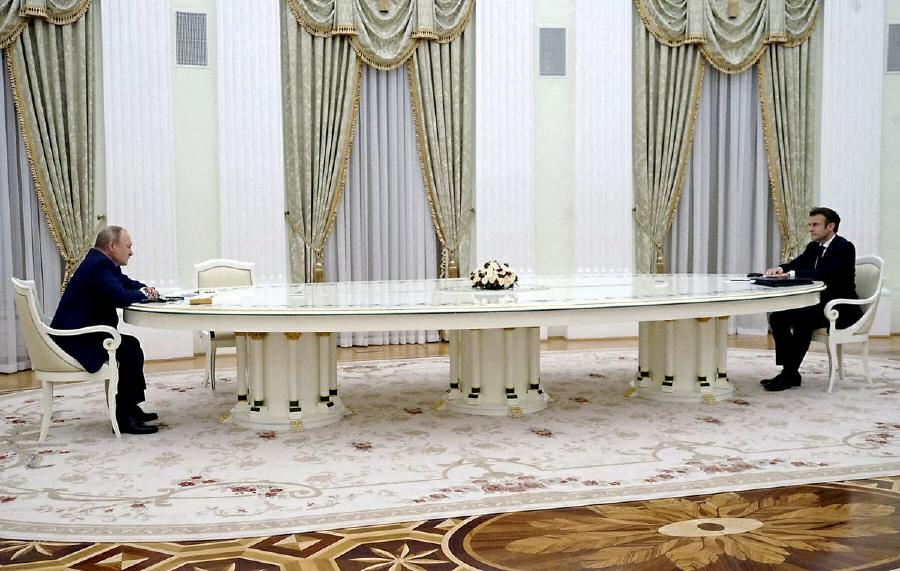
In February 2022, as the U.S. tried to militarily engulf Russia on its western borders by offering NATO membership to Ukraine (see the article here), Russian President Vladimir Putin ordered his army into Ukraine. President Putin placed himself at the unenviable center of world politics by this military action in Ukraine. When European leaders went to Moscow to defuse the situation in the early days of the conflict, Putin dramatized the diplomatic gulf between him and his European visitors in his choice of a 20-feet-long white marble-top table for sitting with his visitors. Here are the pictures of Putin sitting with French president Emmanuel Macron (top) and German chancellor Olaf Scholz (bottom), dramatizing how far Europe was away from Russia on how they see the NATO-provoked war in Ukraine. ∎
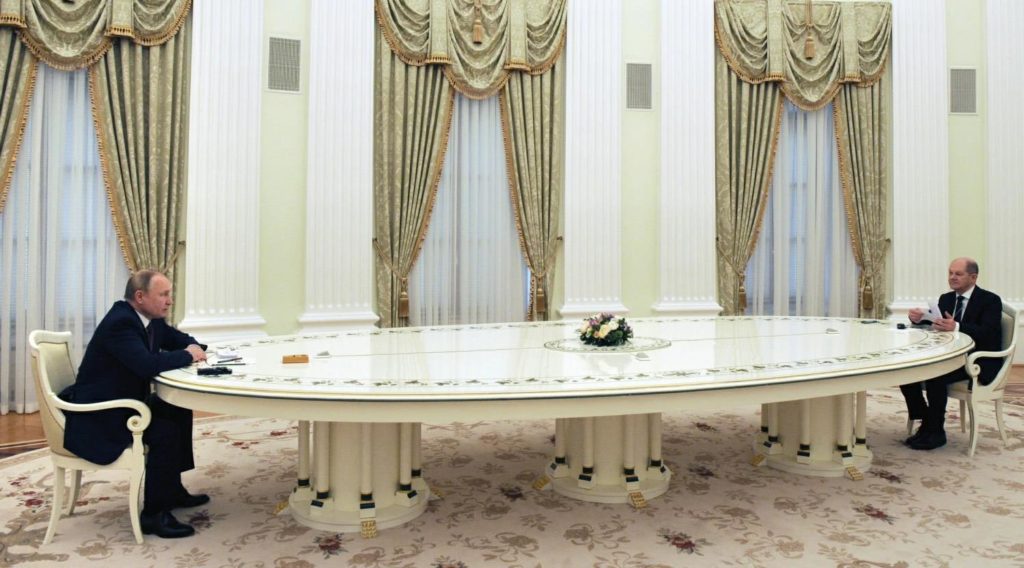
Obituary: Emeritus Pope Benedict (April 16, 1927 — December 31, 2022
Posted by admin in January 2023, Past issues on January 14, 2023
Kollengode S Venkataraman
He stood firmly on the Catholic Church’s orthodoxy, even as the ground he was standing on was tectonically moving within and beyond his church. His interactions with non-Catholic faiths were equally doctrinaire.
On December 31, Pope Emeritus Benedict XVI, 95, died in the Vatican. He became Pope in April 2005. In 2013 Benedict resigned from the Papal Office citing “old age and lack of stamina” as the reasons. Before becoming pope, as Cardinal Joseph Ratzinger, he was a cerebral orthodox Catholic theologian. Pope John Paul II appointed him in 1981 as the Prefect (chief officer) of the Congregation for the Doctrine of the Faith (CDF), known in the 16th century as the Roman Inquisition, with its notorious history in Europe.
The Inquisition in Europe also had an Indian version in Goa with the horrific details available in the Catholic church records and other sources of that era in the Konkan region. The Goan inquisition (imposed by the Portuguese king on the recommendation of Francis Xavier) banned the sale of books in the Konkani, Marathi, Sanskrit and Arabic languages. The use of Konkani was forbidden in the Portuguese colony of Goa.
The Christian missionaries in Goa called the Hindus ‘uncultured’ and ‘savages,’ who worshipped black idols ‘resembling demons’; Hindus were forbidden from holding public office, inheriting their father’s property and testifying as witnesses in courts. If a Hindu child was deemed to be an orphan by the colonialists, the child was taken by the Society of Jesus (founded in 1540 by Ignatius Loyola, Francis Xavier, and others) and made to change his religion. Hindus couldn’t be clerks in village offices. In 1567, a law banning Christians from employing Hindus in the colony was introduced. Chock-full information is available on the Internet and on YouTube.
This is the history of the Congregation for the Doctrine of the Faith that Ratzinger headed as the appointee of Pope John Paul II.
Cardinal Ratzinger’s appointment as the prefect for CDF was for his intellectual acuity and orthodoxy on doctrinal matters. Before Cardinal Ratzinger became Pope Benedict XVI, the Catholic Church in Europe and North America was in turmoil of its own making: in the 1980s, Catholic laity in their 40s and 50s in North America and Europe were outing scores of Catholic priests for sexually abusing them when they were young boys. The pedophilia within the church and homosexuality among priests was deeply embarrassing to the Catholic Church.
What made this worse was the fact that the Catholic hierarchy including archbishops, and even the Vatican – with Ratzinger as the Prefect of the Congregation for the Doctrine of the Faith — was aware of this problem. The Church covered it up without punishing the erring priests. Eventually the scandal exploded in the open with many dioceses in the US filing for bankruptcy protection against lawsuits by their own laity. The moral bankruptcy preceded the financial bankruptcy.
Given this background, when Pope Emeritus Benedict died on December 31, 2022, the media headlines blared, summarizing the complexity of Benedict’s papal term:
The New York Times: Benedict was criticized for his handling of the church’s sex abuse scandal; From Germans, an outpouring of mixed emotions at Benedict XVI’s death; Benedict leaves behind a conflicted legacy on clerical sexual abuse.
Washington Post: Pope Benedict shows us how the Catholic Church went so terribly off course
The Guardian from the UK: “During Pope Benedict’s tenure as the allegations of clerical sexual abuse and its cover up began to surface, his critics said he failed to grasp the gravity of the crimes and the scale of the crisis, which reached a peak several years after he was elected pope.”
Thus, the intellectually sharp and conservative Cardinal Ratzinger, who later became Pope Benedict XVI, was standing firm on the orthodoxy of the church, even as the ground on which he stood was tectonically shaking. We need to see Pope Benedict’s resignation from the papal office against this background of the pedophilia and sex scandals exploding in North America, Europe, even in South and Latin America.
Why the long intro to this article? Well, if Ratzinger and Pope Benedict was this rigid within the Church, why should his attitude towards non-Abrahamic faiths be any different? Towards the theistic, polymorphic, and even agnostic approaches to the Divine Ground outside Christendom?
In the 1990s before the ushering of the new millennia in 2000, the United Nations wanted to produce a declaration on religious amity. It instituted a committee of all major religions. A draft resolution was circulated among the leaders from diverse faiths — Judaism, Christianity’s many branches, Islam, Buddhism, Zoroastrianism, Jainism, Hinduism, Sikhism, and others. Cardinal Ratzinger led the Vatican delegation.
While finalizing the draft, Swami Dayananda Saraswati made his case that the resolution should replace “tolerance” among the religions with the phrase “mutual respect.” The Swami’s point was that “tolerance” may signify no more than the permission given by the adherents of a dominant religion for other religions to exist. An example given was, when we are invited as guests, simply to be “tolerated” by our host is an insult. We want to be treated with respect as equals. See here Rajiv Malhotra’s article.
Cardinal Ratzinger objected to replacing “tolerance” with “mutual respect.” As Rajiv Malhotra of Infinity Foundation noted then, “If religions deemed ‘heathen’ were to be officially respected, there would be no justification for converting their adherents to Christianity.”
Swami Dayananda Saraswati was under pressure to relent. But the Swami persisted that it was time for the non-Abrahamic religions to be accepted as equals and not just tolerated by the three “religions of the book.” At the last minute, the Vatican conceded, and the resolution declared that all religions would agree to respect one another. This was big news and was broadcast widely among the non-Abrahamic religions.
However, within a month, the Vatican backtracked saying that while “followers of other religions can receive divine grace, it is also certain that objectively speaking, they are in a gravely deficient situation in comparison with those who, in the Church, have the fullness of the means of salvation.”
Even as people from all over the world poured in their messages praising Emeritus Pope Benedict’s death, I feel comfortable being an insignificant contrarian, given my roots within the polymorphic faith called Hinduism and Gautama Buddha’s agnostic approach to understand our Divine Ground. ∎
Mandal Singh Persuades the Gateway School to Recognize Deepavali as a School Holiday
Posted by admin in January 2023, Past issues on January 13, 2023
By K S Venkataraman
Mandal Singh has been living in this metro area for over fifteen years after a circuitous route in his career in Sweden, and France. He was born in the pilgrimage town of Gorakhpur in Uttar Pradesh, India, where he completed his master’s degree in botany. After teaching at the Udaipur University for four years he went to the Indian Institute of Science (IISc), Bangalore. After one year at the IISc, he went to the University of California, Santa Cruz and earned his PhD in biology in 1974.
From 2007 to 2013 he was a faculty member at the Department of Medicine, Dorothy P. & Richard P. Simmons Center for Interstitial Lung Disease, University of Pittsburgh School of Medicine. Now he is retired.
Mr. Singh, with his wife Madhu, moved to Monroeville in 2010. He became active in the Monroeville Public Library, and got elected to the library governing board, where he served for five years. Believing that he could contribute to the Gateway School System, in 2021, with help from friends and lot of legwork, he was elected to the Gateway School Board in November 2021.
Hindus, Jains, Buddhists, and Sikhs celebrate Deepavali, the festival of lights, in different contexts. Recently, the New York City Public Schools with one million students declared Deepavali a holiday.
So, in November 2022, Mr. Mandal Singh introduced a resolution at the Gateway School Board meeting to recognize Diwali as a holiday. Mr. Singh was happy when the school board adopted his suggestion at the December 8, 2022 meeting, and passed the resolution declaring Deepavali as a school holiday starting in the 2023-2024 school year and replacing the Friday-after-Thanksgiving holiday for Deepavali in the Gateway Public School calendar.
Adding a new and additional school holiday for a religious festival is extremely difficult in the US, given our ethnic and religious diversity. However, Mandal Singh’s effort is worthy of our recognition because now the Gateway School System acknowledges Deepavali as a religious festival for students of Indian origin in the school district and let other students know of this important festivals celebrated by Hindus, Buddhists, Jains, and Sikhs in many parts of the world beyond India. ∎
The Dhru Gul Bhagwanani Senior Center Opened After Renovation
Posted by admin in January 2023, Past issues on January 13, 2023
By Jamnadas Thakkar
Editor’s Note: Dhrupadi and Gul Bhagwanani, long-time, low-key residents of our area, both passed away in 2012 within a span of two months. They were both Children of Partition. They left their considerable estate to charity in their will. Jamnadas Thakkar, known to many and a friend of the Bhagwananis, worked for several years as the state-appointed executor for their estates that culminated in a sizable part of their estates going to the creation of the Dhru Gul Bhagwanani Pittsburgh Indian Senior Center (The Bhagqwanani Senior Center hereafter), inaugurated in 2019. Location: on Business Route 22 in Monroeville, near the Miracle Mile Shopping Center, minutes from the Turnpike and Interstate 376.
This fall the center was renovated conforming to the guidelines in the Americans with Disabilities Act (ADA) for seniors to use the resources of the facility. Here Jamnadas Thakkar’s reports on the renovated place.
The renovated Bhagqwanani Senior Center reopened on October 9, 2022, as a much larger 4,500 sq. ft. facility on the ground floor (no steps) with ADA-required amenities at 3955 Monroeville Blvd., Monroeville, PA 15146. It also has an entrance on 3946 William Penn Highway (Business Rt.22).
The center has a social/meeting hall with a seating capacity for 100, a stage with a large 16’ screen, and theatre-style audiovisual amenities. Also available is a full-fledged commercial kitchen, an exercise room with a bike and a blood pressure machine, a dining hall with senior-friendly game supplies and a small shrine for personal prayer. The center is equipped with state-of-the-art safety, security, and surveillance systems.
More than ninety invited guests from the social, cultural and religious organizations in our metro area attended the inauguration on October 9. Haresh Malkani, with the help of Rahul Joshi and Tridas Mukhopadhyay, organized the event with Brita Chakrabarty as the emcee.
The highlight of the program was a Kuchipudi dance recital by Kamala Reddy’s students Sia Iyer, Srimayi Mulukutla and Arpitha Udupa, followed by a Bollywood Karaoke music performance by Vijeta and Gaurav Hombali, Sheela Raju, Ganesh Krishnamoorthy and Haresh Malkani.
A large number of people attended the center’s Open House on Saturday, October 15. The first public event at the center was the Diwali gala on October 22, with Sasikala Krishnamoorthy, the office manager, organizing a cultural program. Over ninety people attended the gathering.
The center is open to all Indian seniors over 60 years of age and their spouses on Saturdays and Sundays from 11:00 am to 3:00 pm during winter, and 11:00 am to 4:00 pm during spring, summer and fall.
Regular activities include Yoga classes from 11:00 am to 12:00 noon on Saturdays (by Saroja Chandrasekaran) and on Sundays (by Mandal Singh), followed by lunch between 12:00 noon and 1:00 pm.
The center holds senior-friendly games (carom, cards, bingo, antakshari, movies) offering tea, coffee, and snacks from 1:00 pm onwards.
Other activities at the center are lectures and talks on Medicare Open Enrollment Options, Taxes 2022 and Beyond, Investment Strategies, and on health, wellness & medical care. The center will organize these events with the option for in-person participation and live broadcast on Zoom and FaceBook. All programs are followed by lunch. The center also will organize special programs such as Karaoke, and dance performances with Bollywood singing on a monthly/quarterly basis. Future programs will include on art, painting, decoration and singing classes, cultural shows & drama, indoor games (bridge, bingo, chase, billiard/pool, table tennis), musical chairs, Bhajans, Satsang, and discourses.
President’s Message: “The center recognizes the self-worth of older adults and provides them services and activities in a friendly atmosphere to encourage and support senior life. Join us for group activities of yoga, music, discourses, exercises, and one-on-one interactions. We serve snacks and tea/coffee on Saturdays and Sundays. Most importantly there are No Admission or Membership Fees of any kind.”
Members of a managing board volunteering time for the center: Radhu Agrawal (President), Satish Jindel, Kishor Mehta, Rahul Joshi (Secretary) and Ex-Member P.J. Gursahaney. Advisory Committee Members: Umesh Golani, Haresh Malkani, Tridas Mukhopadhyay and Rajnikant Popat.
People who served in previous years: Mohan Chabra (Chairman of Programs), Mahendra Shah (who designed all the signs & logos), Praful Desai, Sumedha Nagpal, Bharti Patel, Jasbir Sayal, Mira Shah, Datar Singh & Prabhanand Yedla. Office Managers: Sasikala Krishnamoorthy & Sandhya Sampat (Ex-Manager). Volunteers: Prakash Patel (Structural Design during Construction and Renovation), Gopal Krishnamoorthy (IT help), Prajna Parasher and Nidhi Gangwar (Interior and exterior decorations); Jay Gowda (Audiovisual)
Saroja Chandrasekaran (Yoga and Ex-Advisory member); Mandal Singh and Bhavna Mehta (Yoga teachers); Nandini Mandal (Taal Se Taal Mila exercises with music); Nisha Joshi of NYC, and speakers who gave talks on health, Medicare, finance, taxes and investment and others.
Thanks to Hindu Jain Temple and S.V.Temple for providing the priest services; and many thanks to the Monroeville municipality zoning, permit and police departments for their continued support & cooperation. Contact Info: (412)376-9933 e-mail: iscpdgb@gmail.com website: www.pittsburghindianseniorcenter.org ∎

